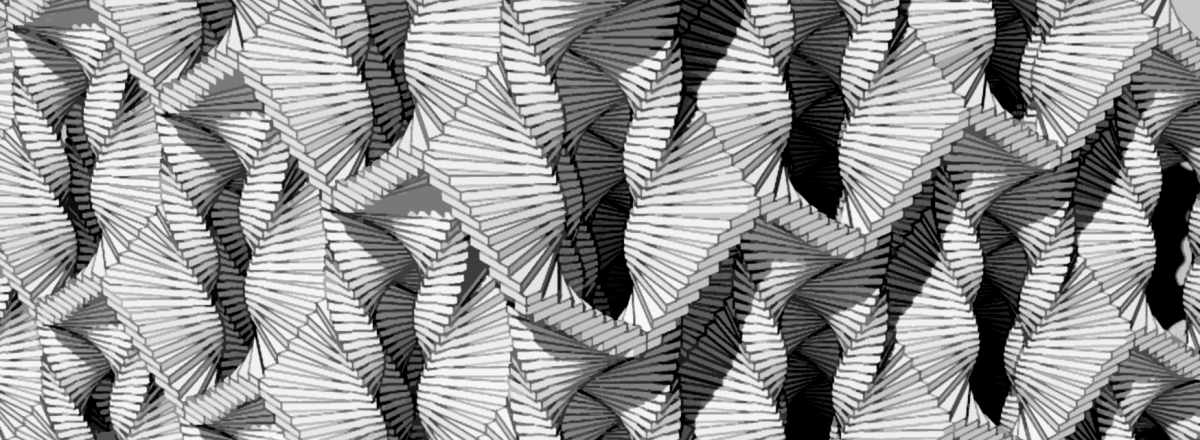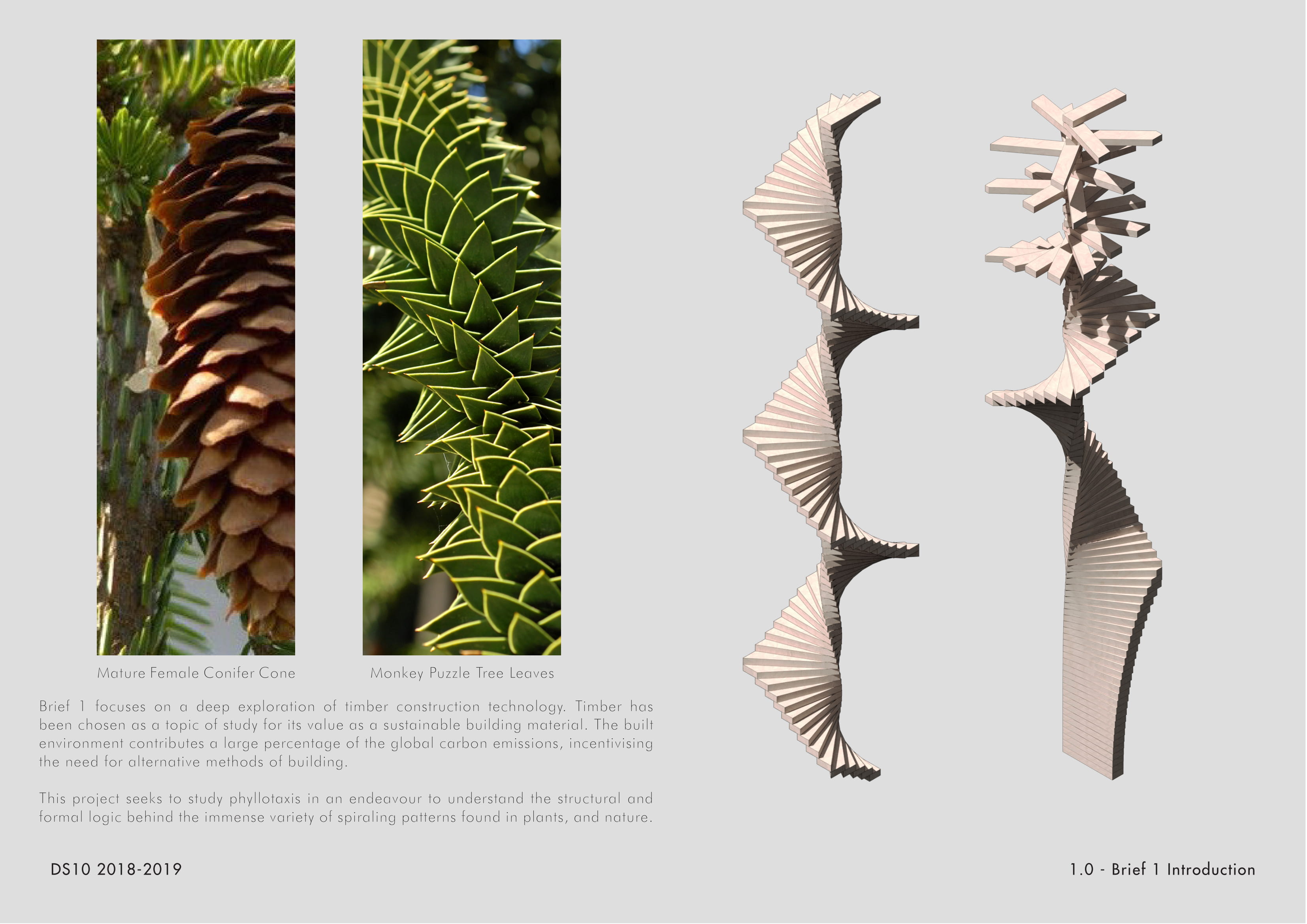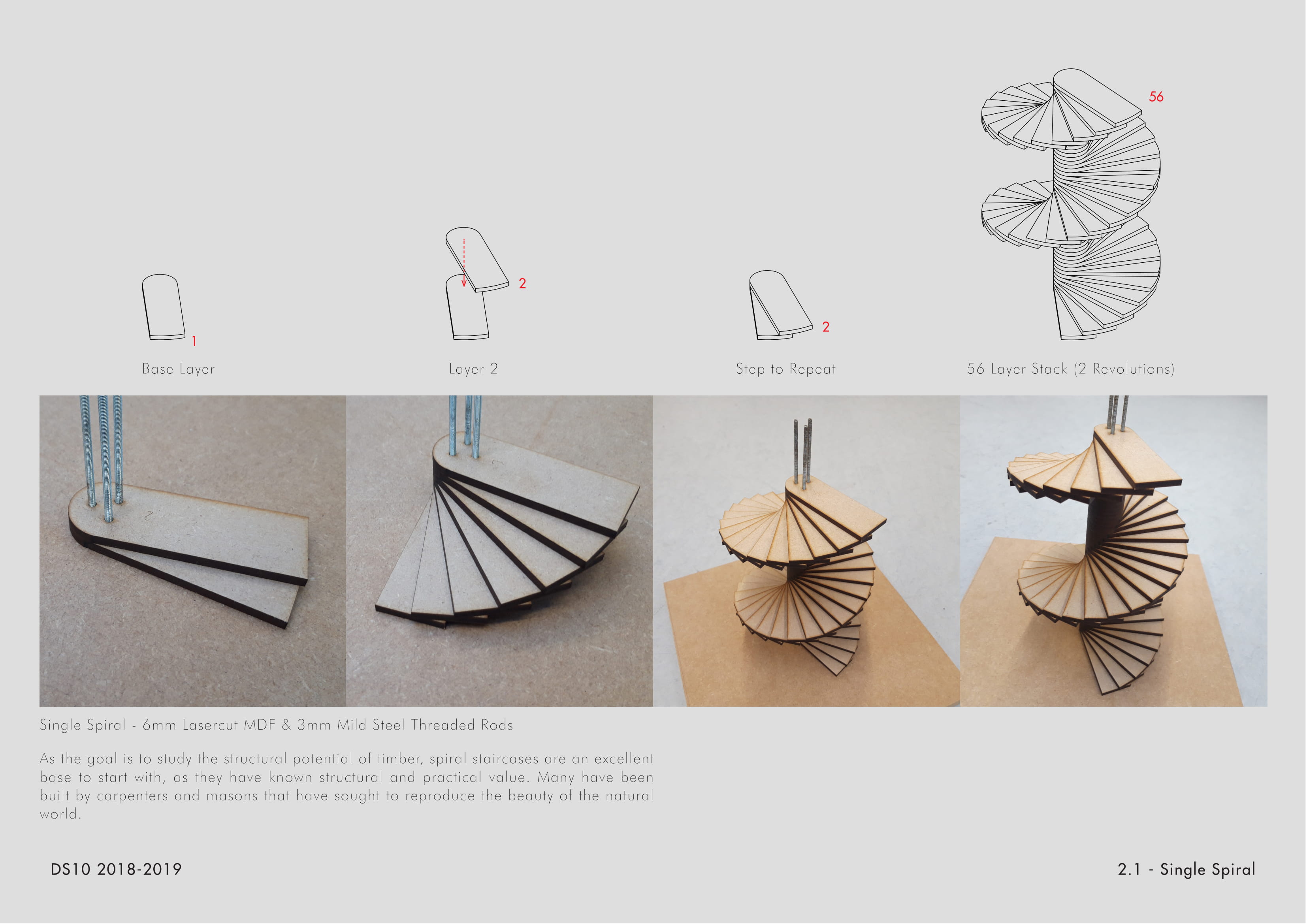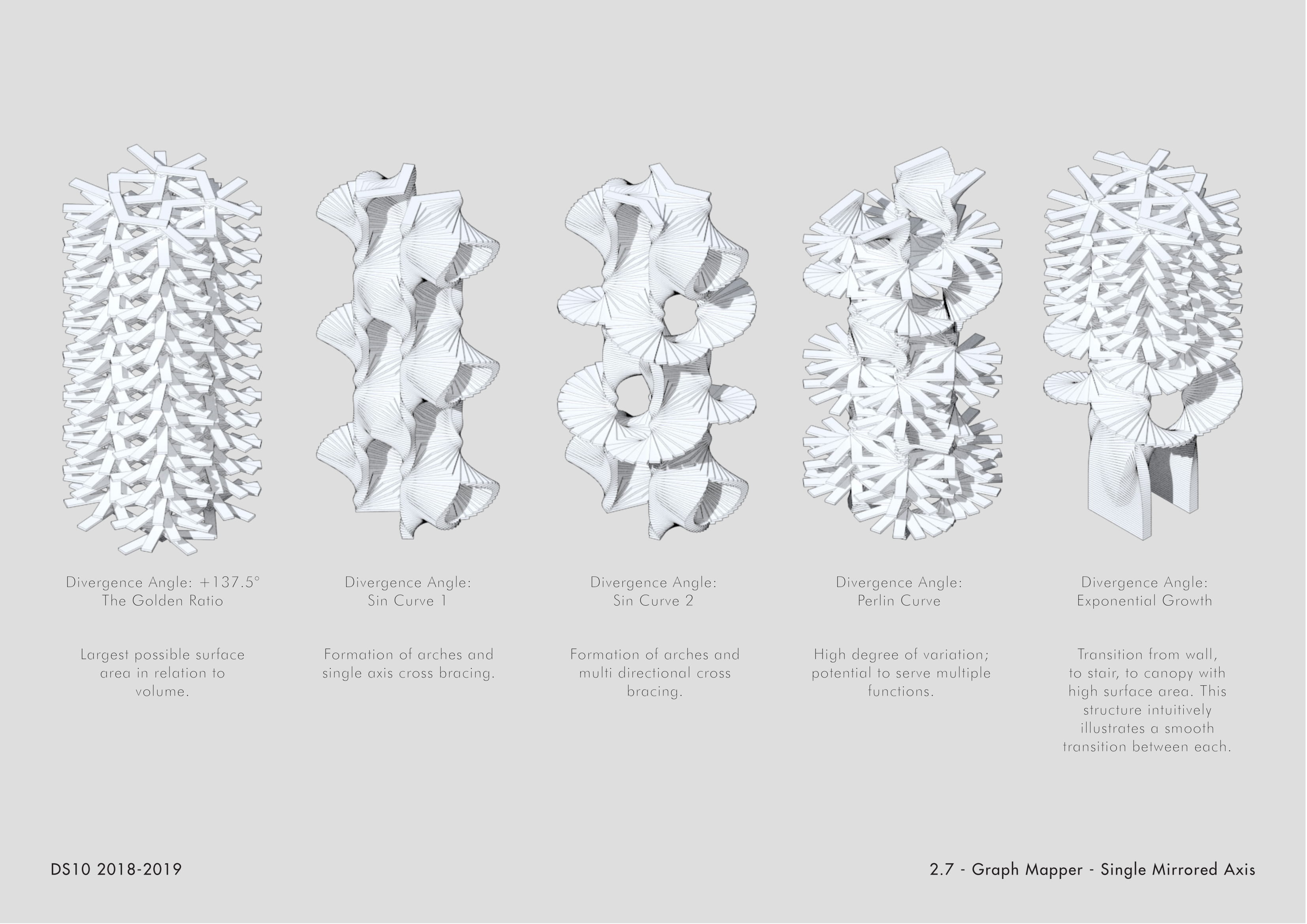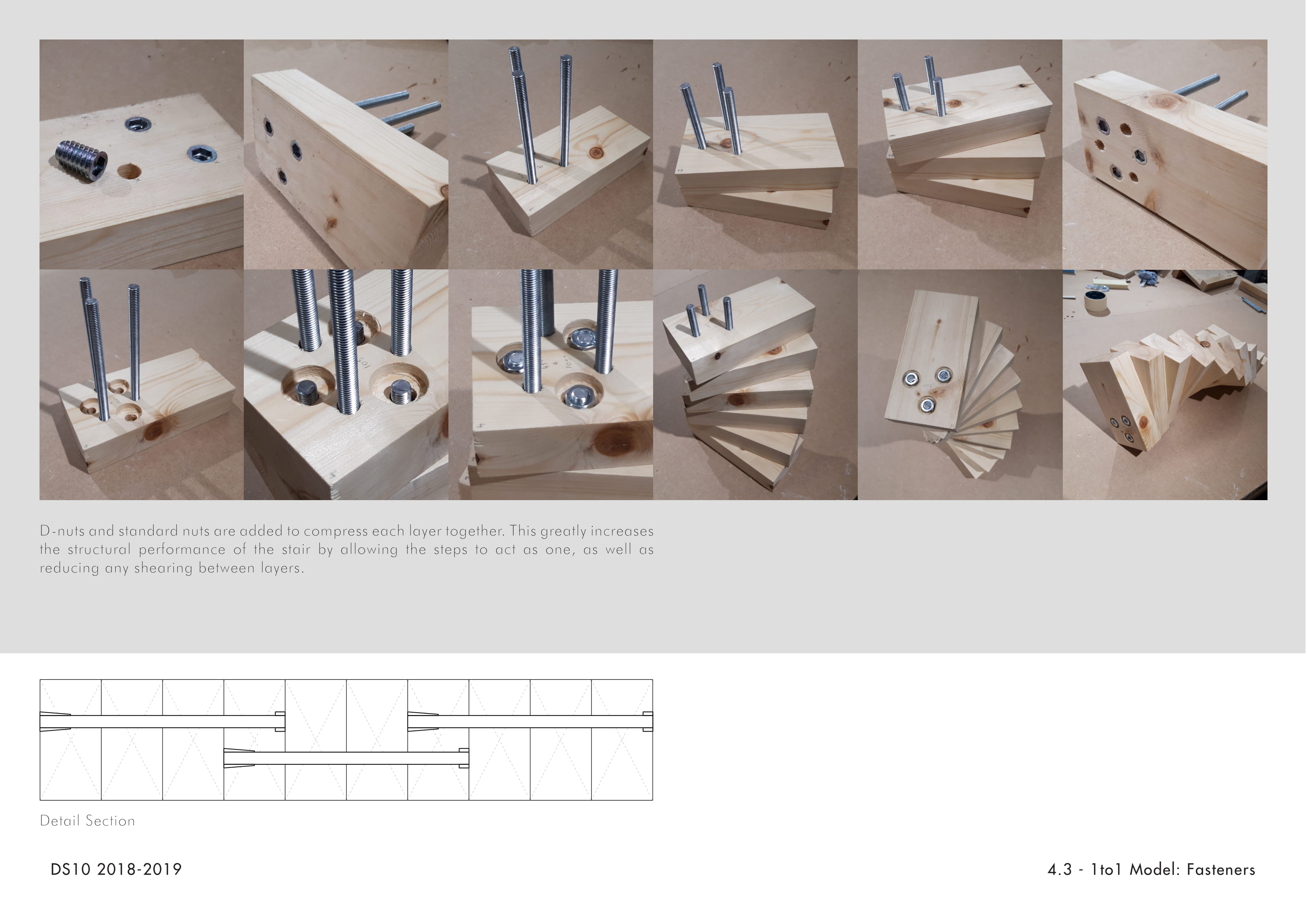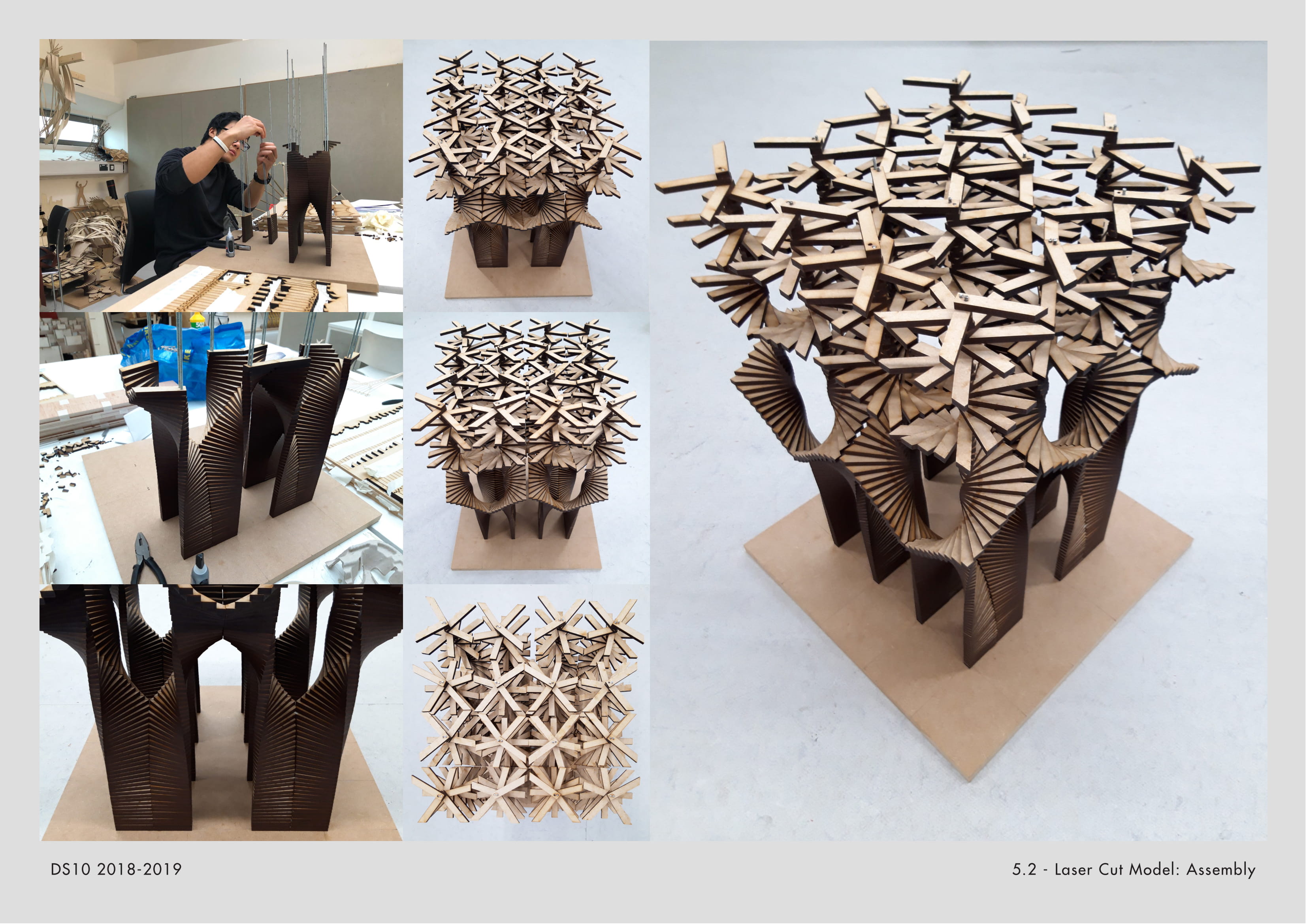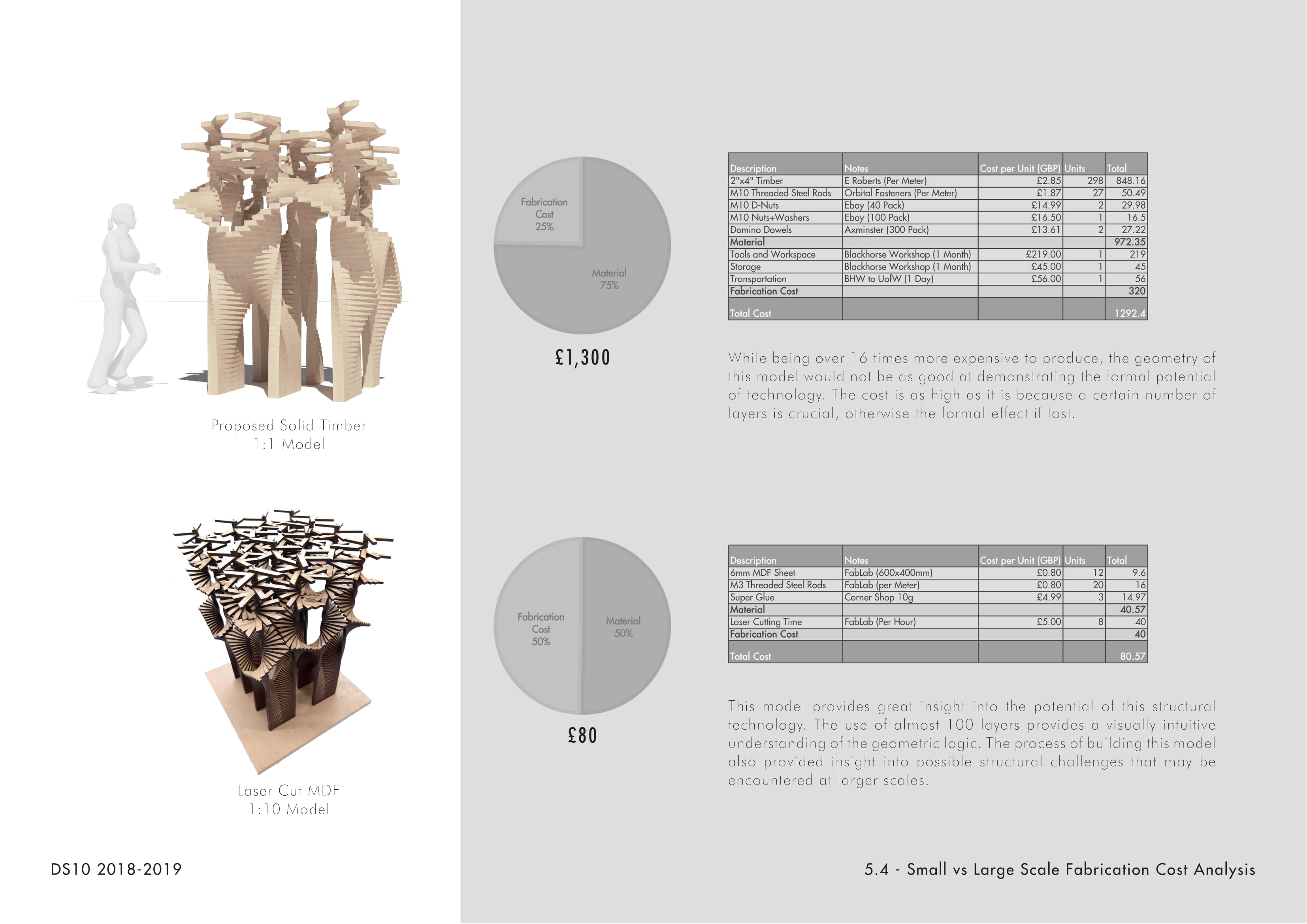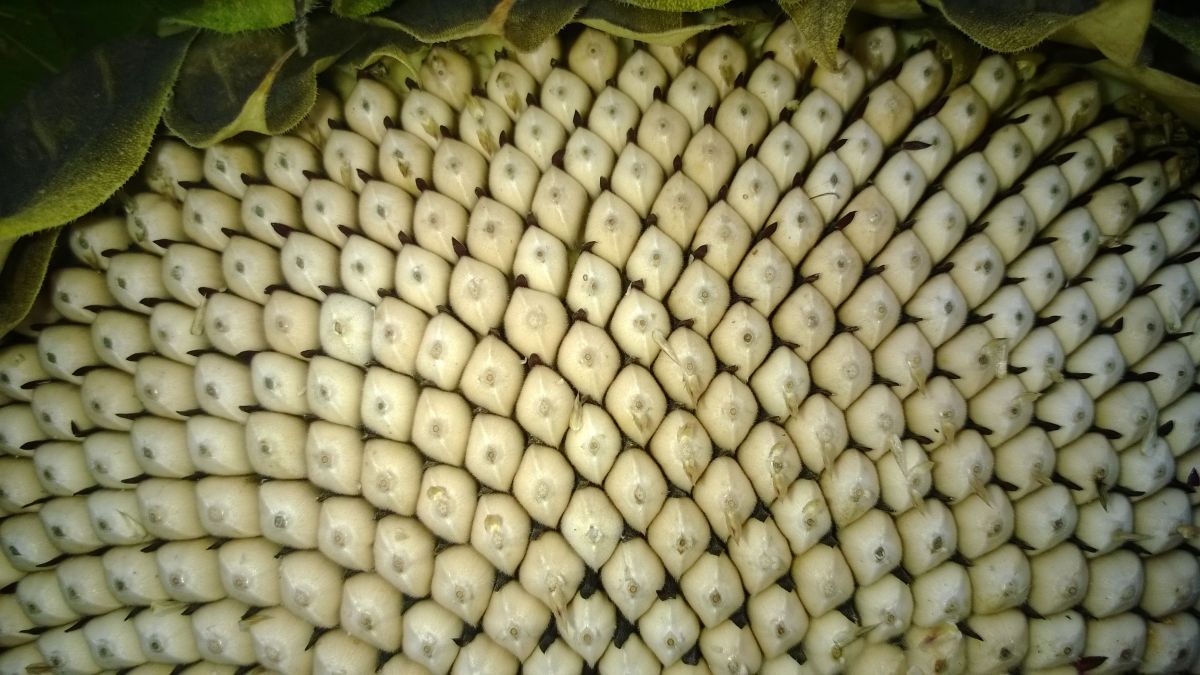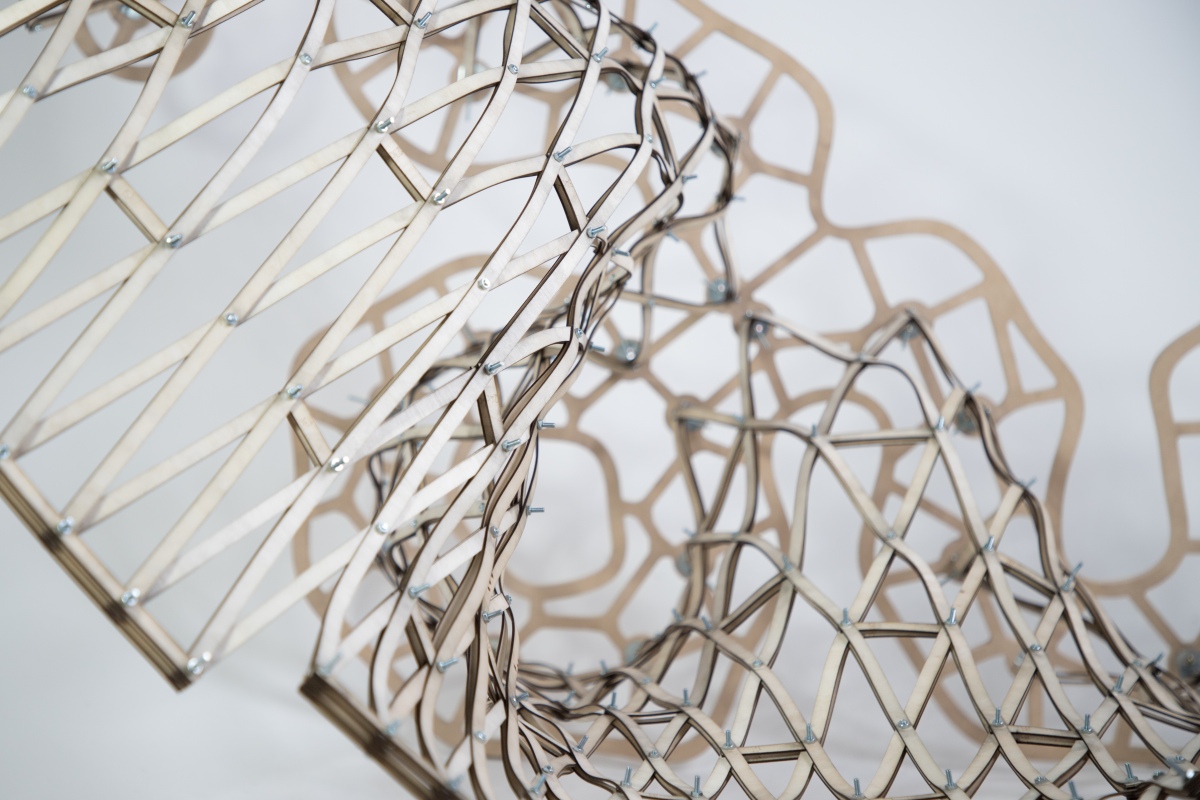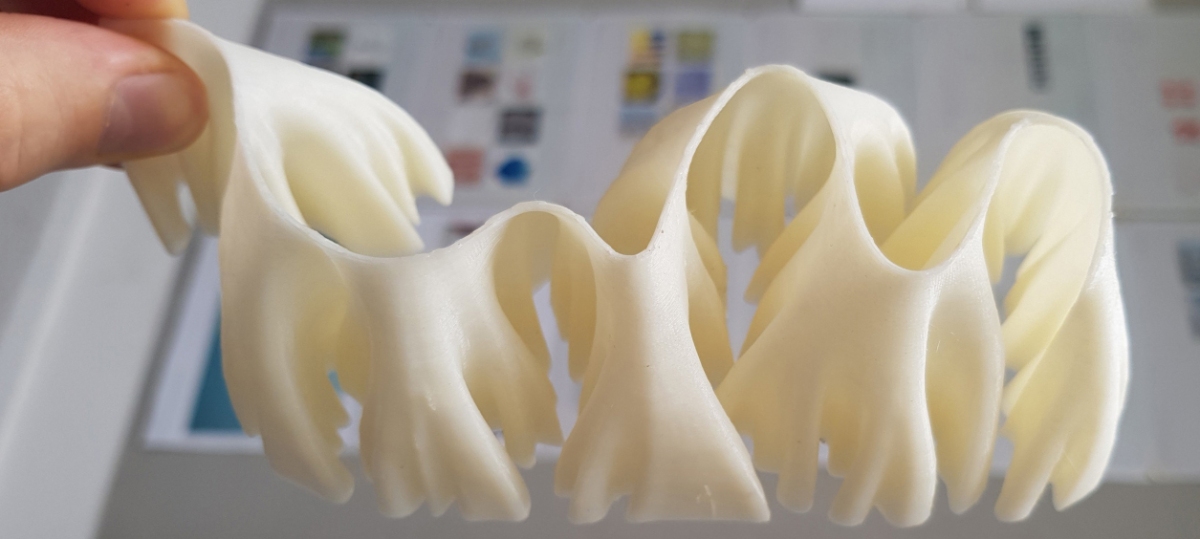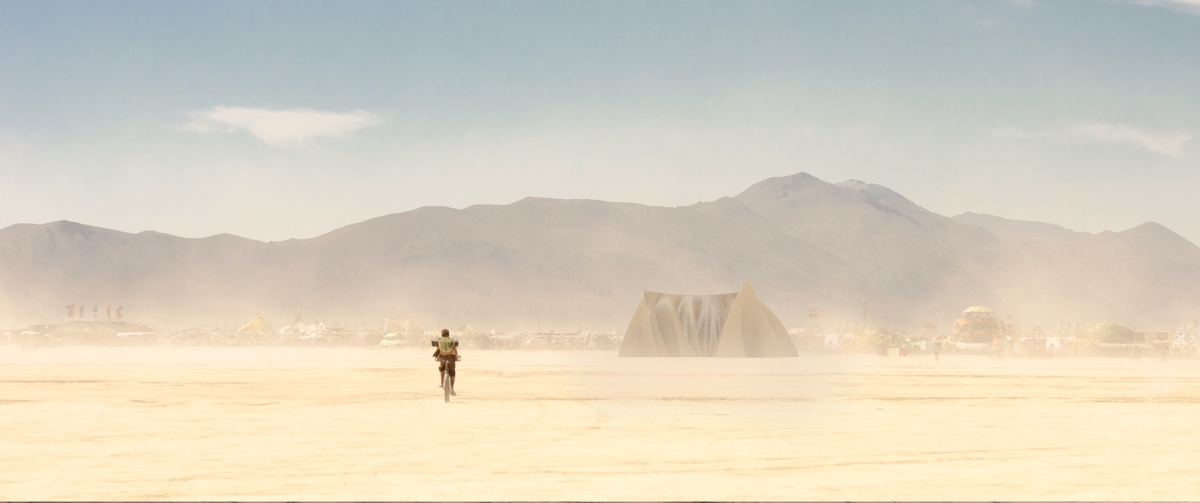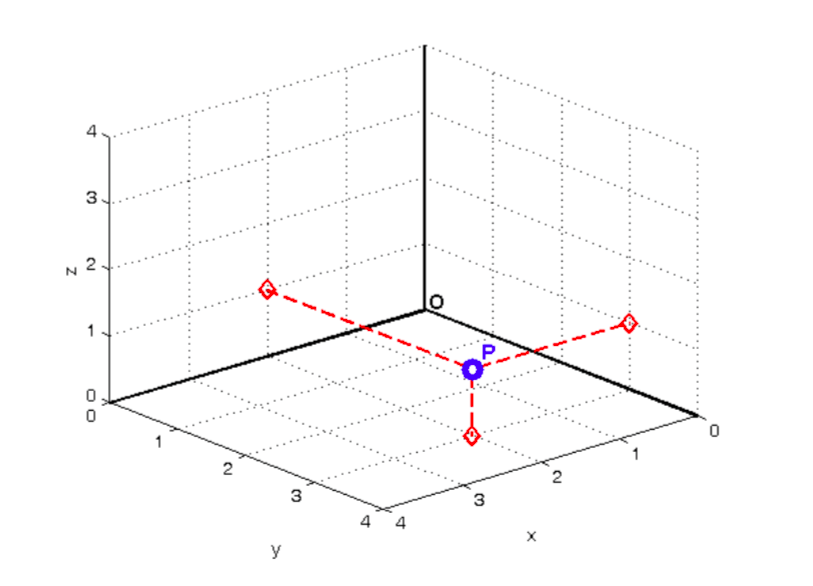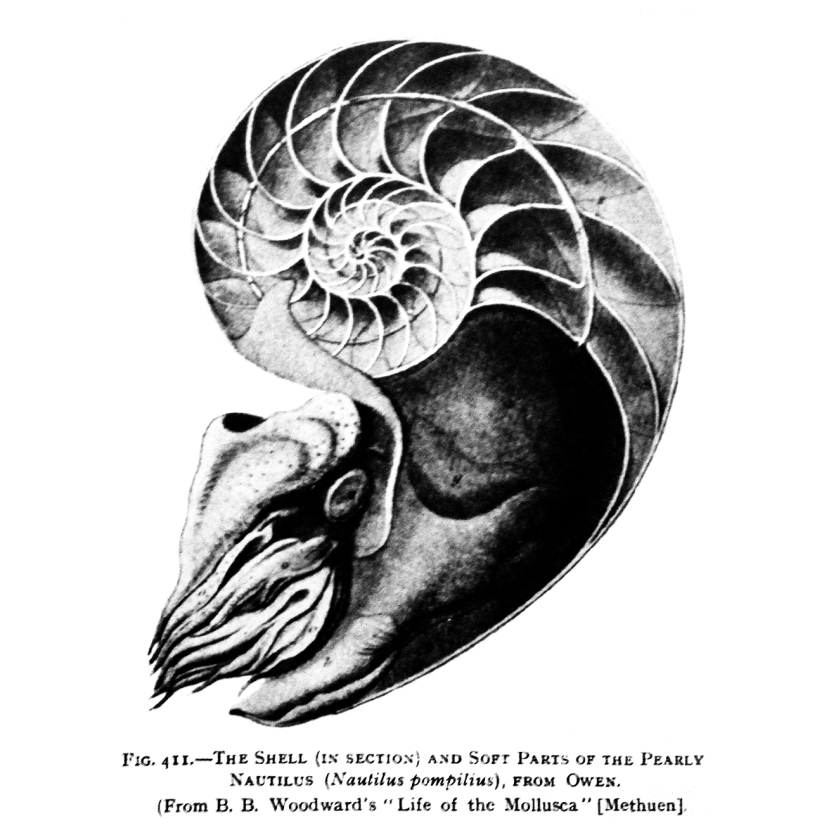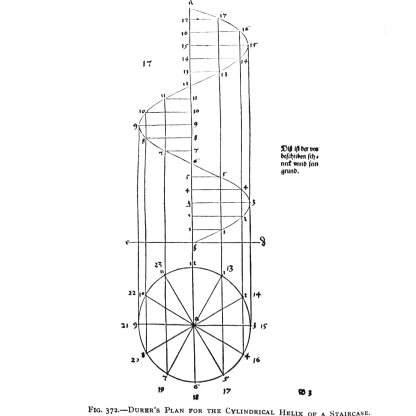Author: Nick Leung
Plants, Math, Spirals, & the Value of the Golden Ratio
The natural world is brimming with ratios, and spirals, that have been captivating mathematicians for centuries.
1.0 Phyllotaxis Spirals
1.1 Rational Numbers
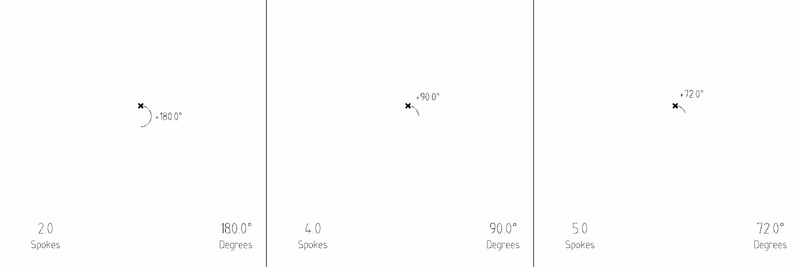
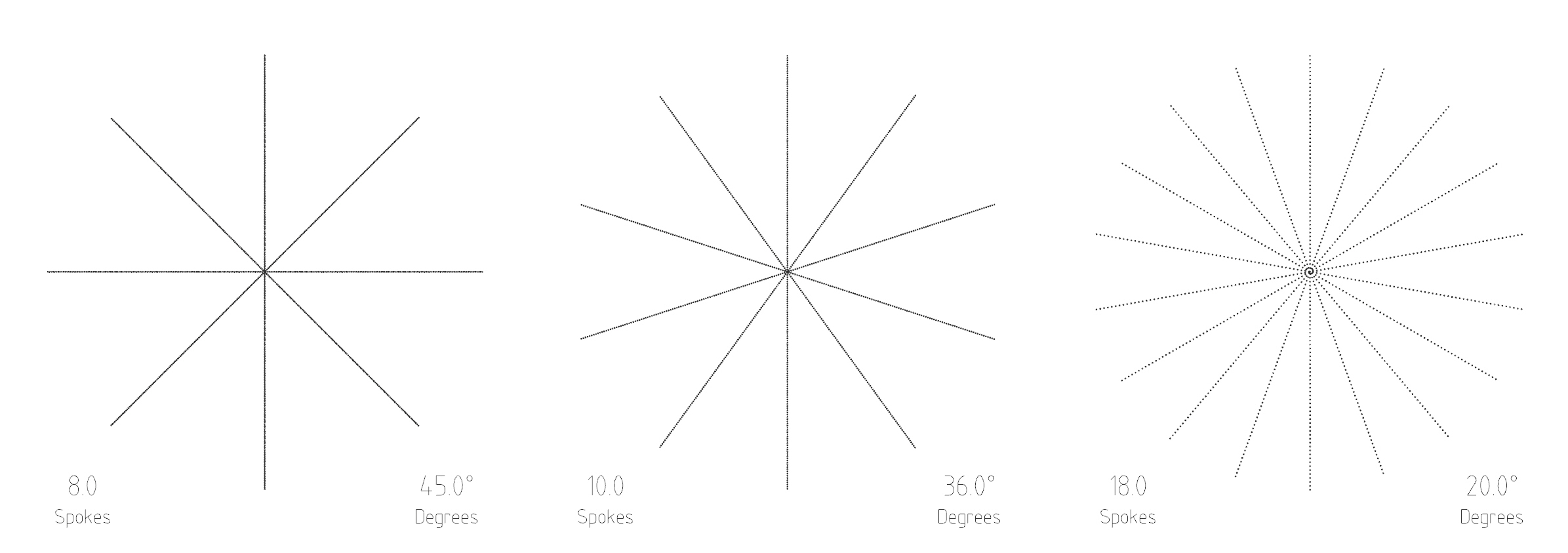
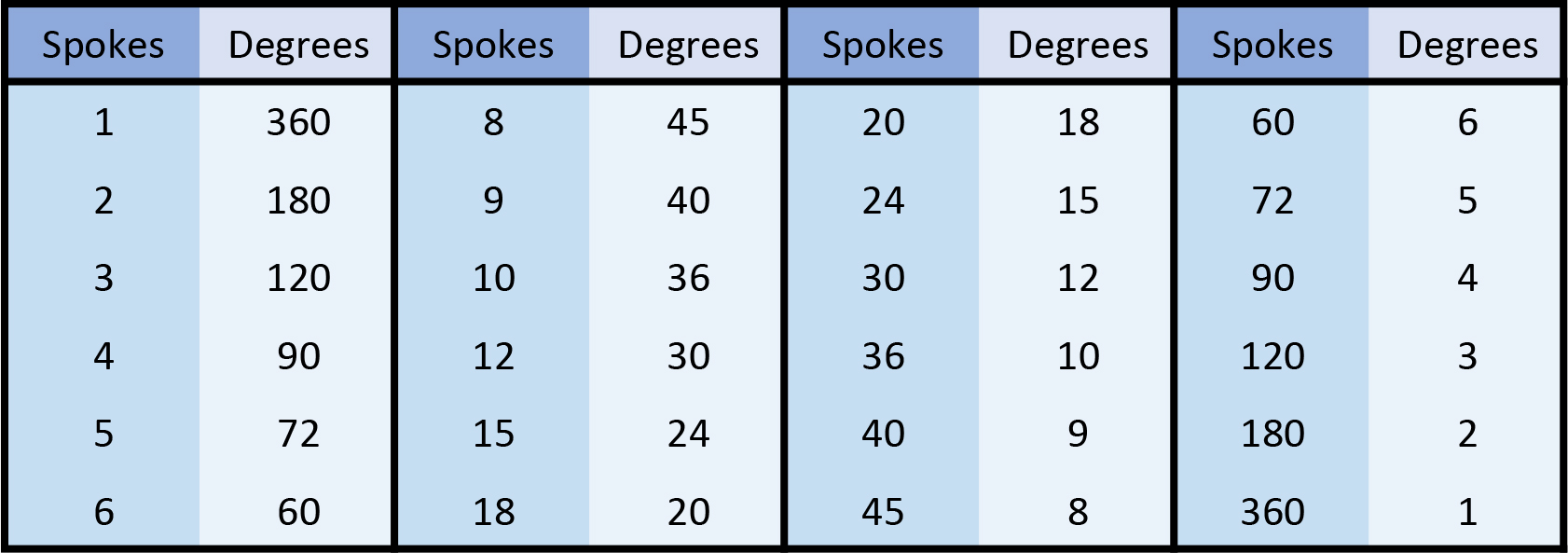
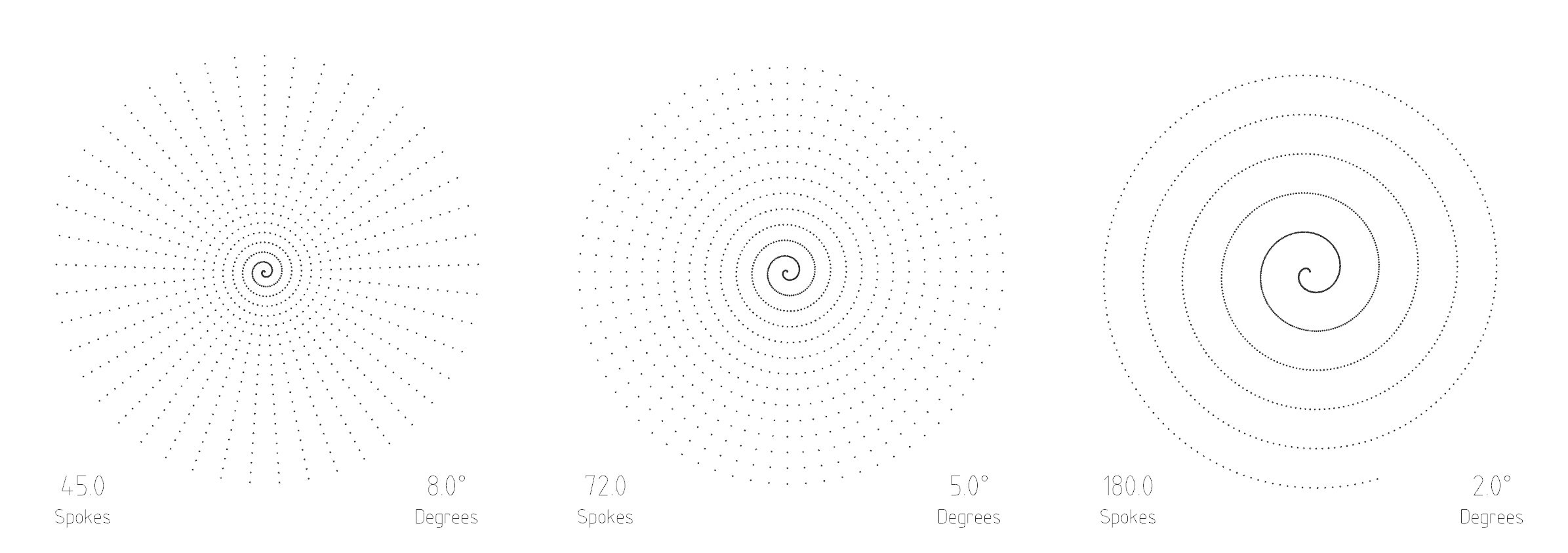
1.2 Irrational Numbers
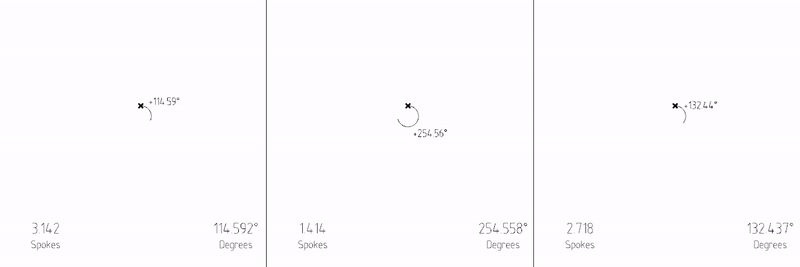
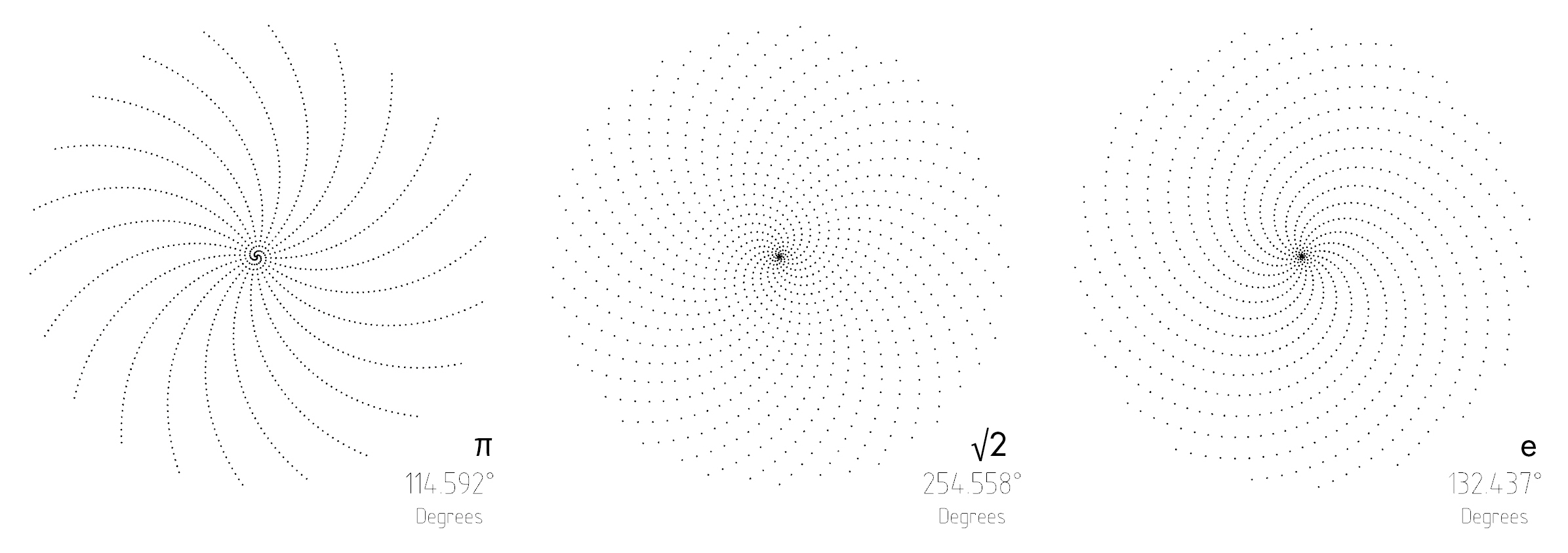
1.3 Quantifiable irrationality
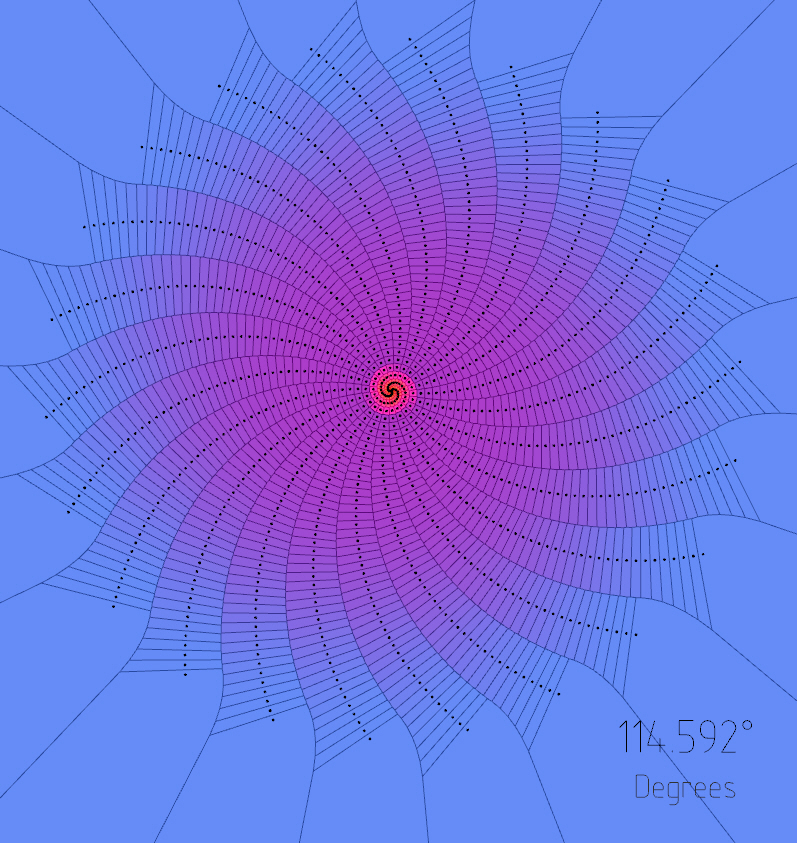

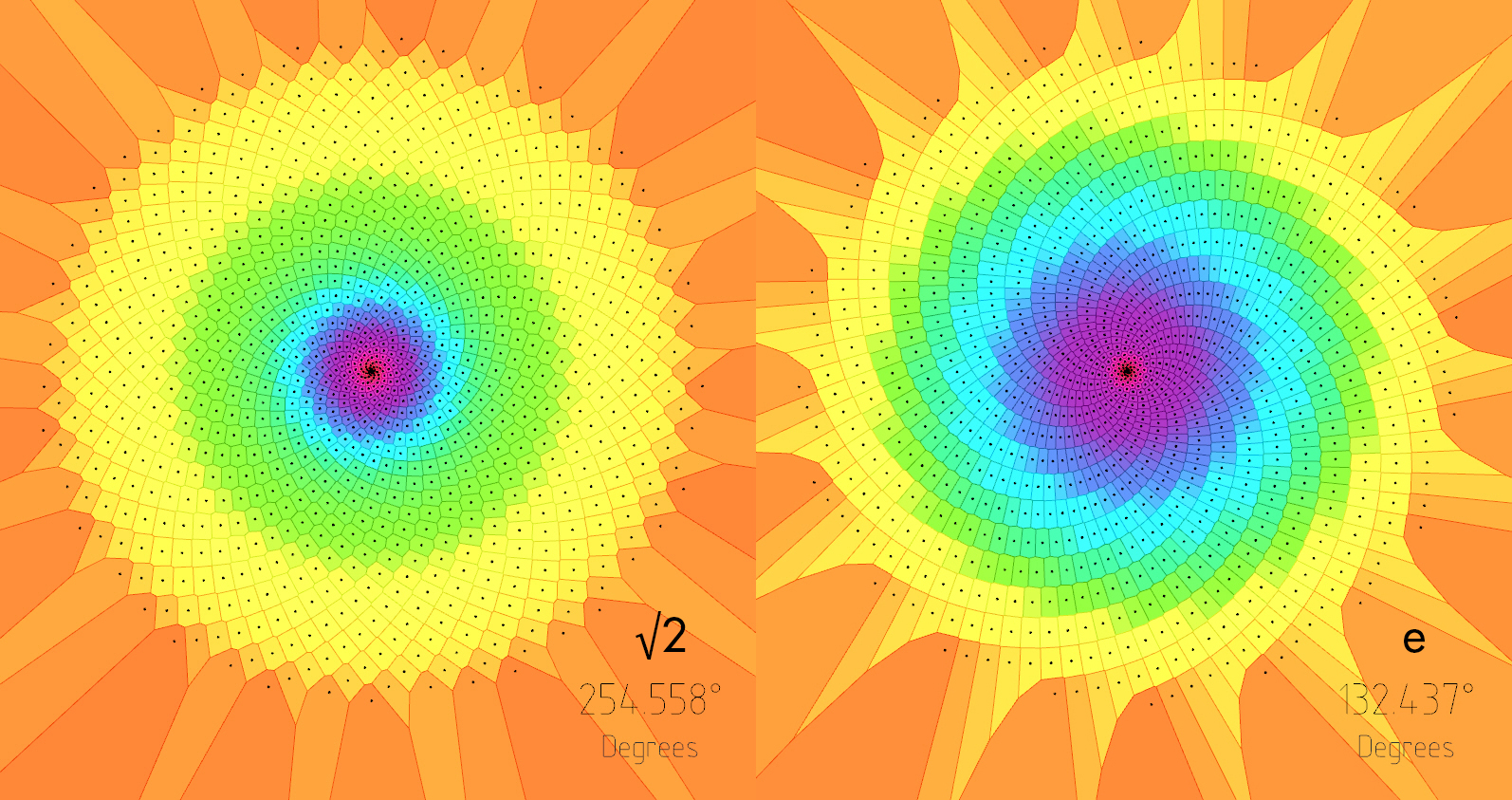
1.4 Phi
Source:
Infinite fractions and the most irrational number: [Link]
The Golden Ratio (why it is so irrational): [Link]

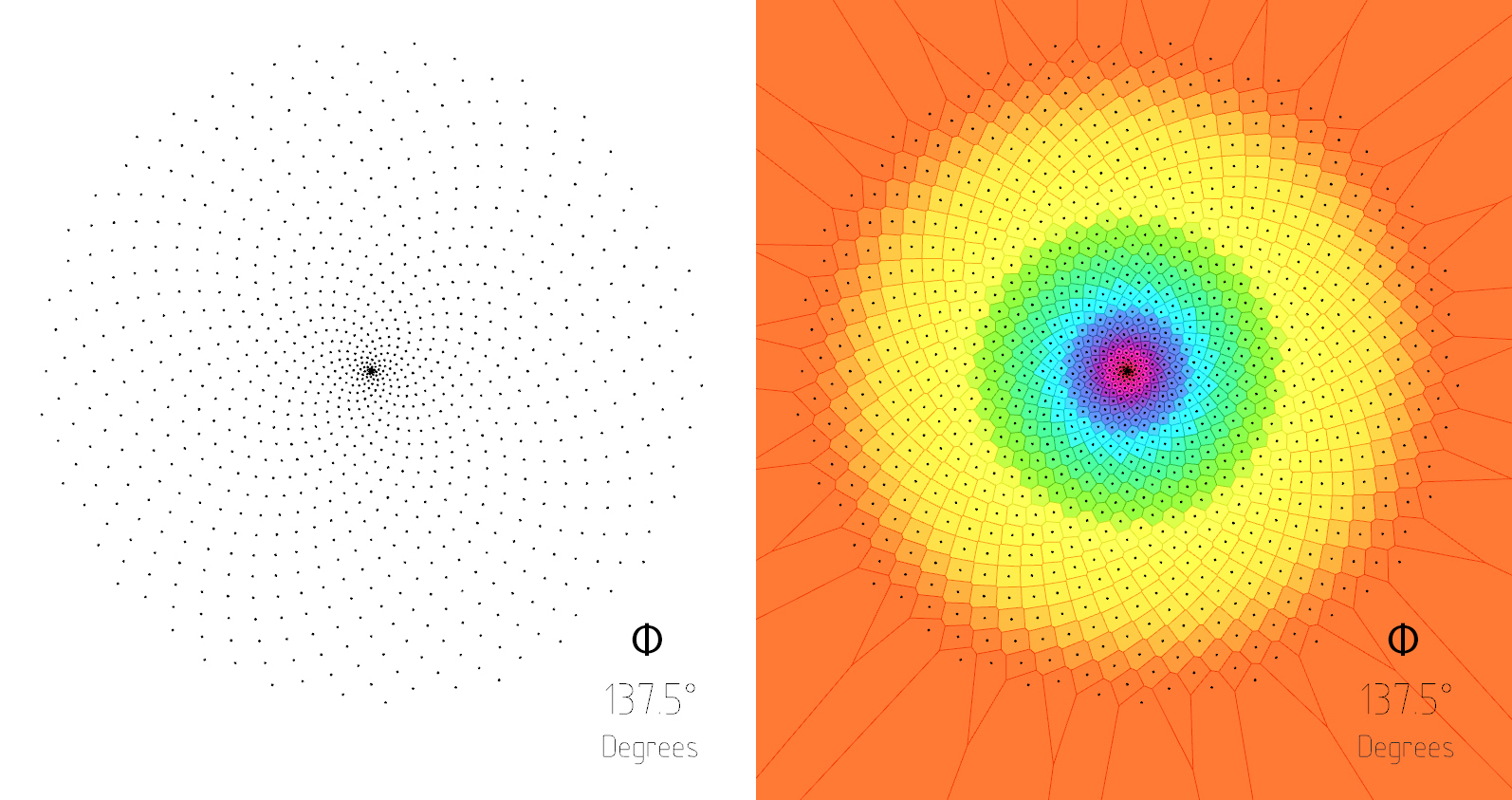
1.5 The Metallic Means & Other Constants
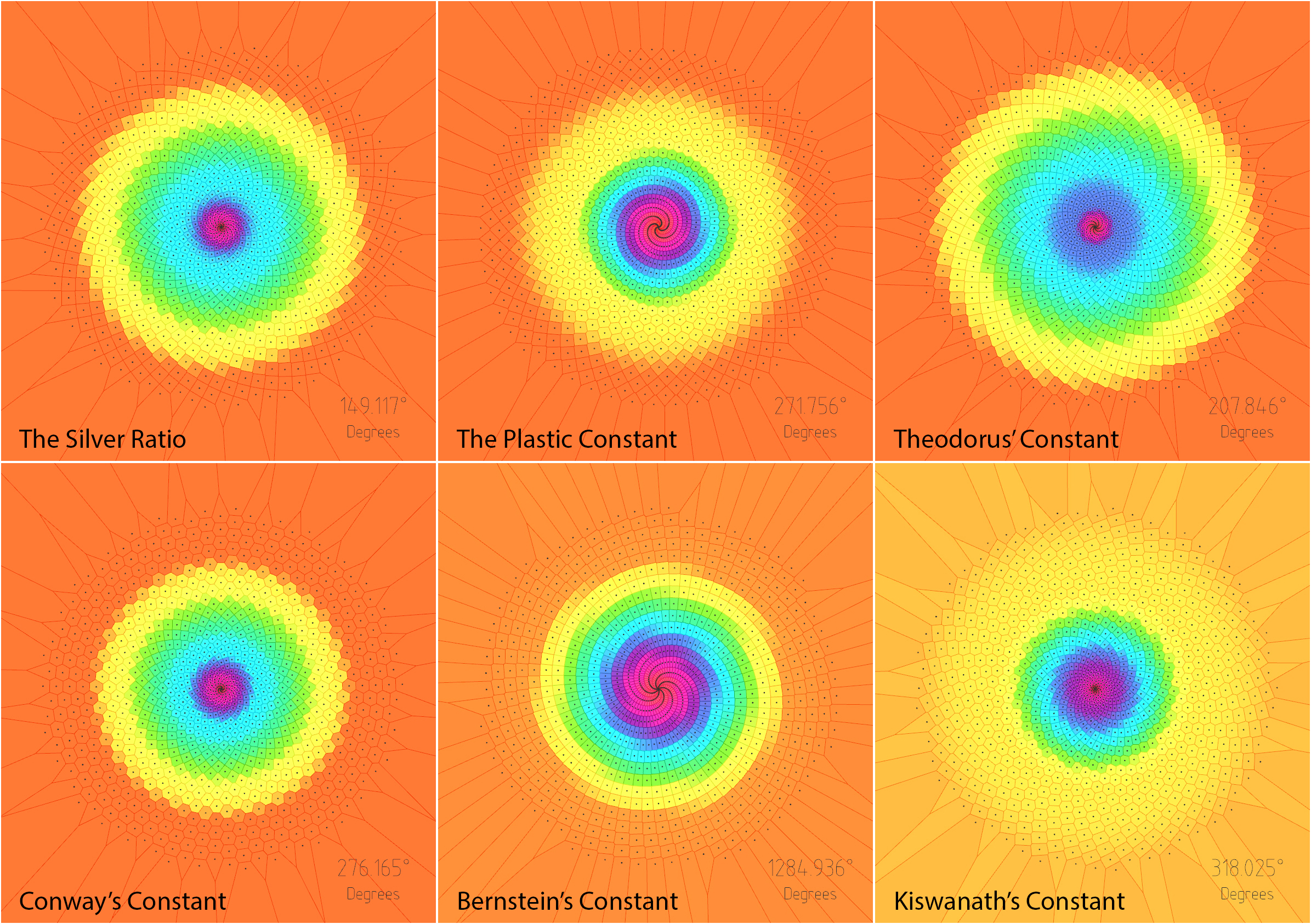
Source:
The Silver Ratio & Metallic Means: [Link]
1.6 Why Spirals?
M.C. Escher said that we adore chaos because we love to produce order. Alain Badiou also said that mathematics is a rigorous aesthetic; it tells us nothing of real being, but forges a fiction of intelligible consistency.
The Nature of Gridshell Form Finding
Grids, shells, and how they, in conjunction with the study of the natural world, can help us develop increasingly complex structural geometry.
Foreword
This post is the third installment of sort of trilogy, after Shapes, Fractals, Time & the Dimensions they Belong to, and Developing Space-Filling Fractals. While it’s not important to have read either of those posts to follow this one, I do think it adds a certain level of depth and continuity.
Regarding my previous entries, it can be difficult to see how any of this has to do with architecture. In fact I know a few people who think studying fractals is pointless.
Admittedly I often struggle to explain to people what fractals are, let alone how they can influence the way buildings look. However, I believe that this post really sheds light on how these kinds of studies may directly influence and enhance our understanding (and perhaps even the future) of our built environment.
On a separate note, I heard that a member of the architectural academia said “forget biomimicry, it doesn’t work.”
Firstly, I’m pretty sure Frei Otto would be rolling over in his grave.
Secondly, if someone thinks that biomimicry is useless, it’s because they don’t really understand what biomimicry is. And I think the same can be said regarding the study of fractals. They are closely related fields of study, and I wholeheartedly believe they are fertile grounds for architectural marvels to come.
7.0 Introduction to Shells
As far as classification goes, shells generally fall under the category of two-dimensional shapes. They are defined by a curved surface, where the material is thin in the direction perpendicular to the surface. However, assigning a dimension to certain shells can be tricky, since it kinda depends on how zoomed in you are.
A strainer is a good example of this – a two-dimensional gridshell. But if you zoom in, it is comprised of a series of woven, one-dimensional wires. And if you zoom in even further, you see that each wire is of course comprised of a certain volume of metal.
This is a property shared with many fractals, where their dimension can appear different depending on the level of magnification. And while there’s an infinite variety of possible shells, they are (for the most part) categorizable.
7.1 – Single Curved Surfaces
Analytic geometry is created in relation to Cartesian planes, using mathematical equations and a coordinate systems. Synthetic geometry is essentially free-form geometry (that isn’t defined by coordinates or equations), with the use of a variety of curves called splines. The following shapes were created via Synthetic geometry, where we’re calling our splines ‘u’ and ‘v.’
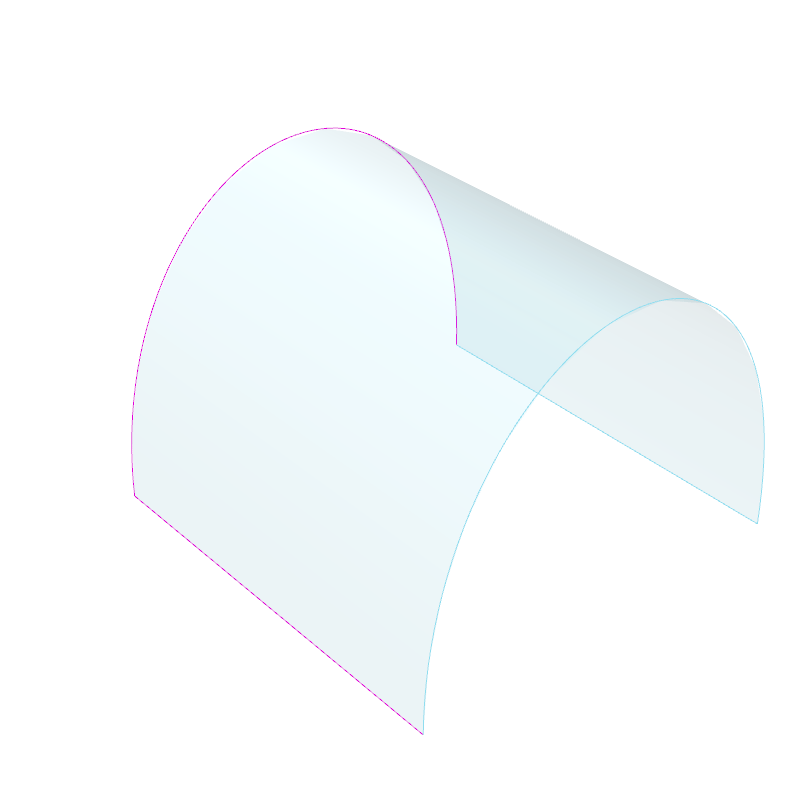
These curves highlight each dimension of the two-dimensional surface. In this case only one of the two ‘curves’ is actually curved, making this shape developable. This means that if, for example, it was made of paper, you could flatten it completely.
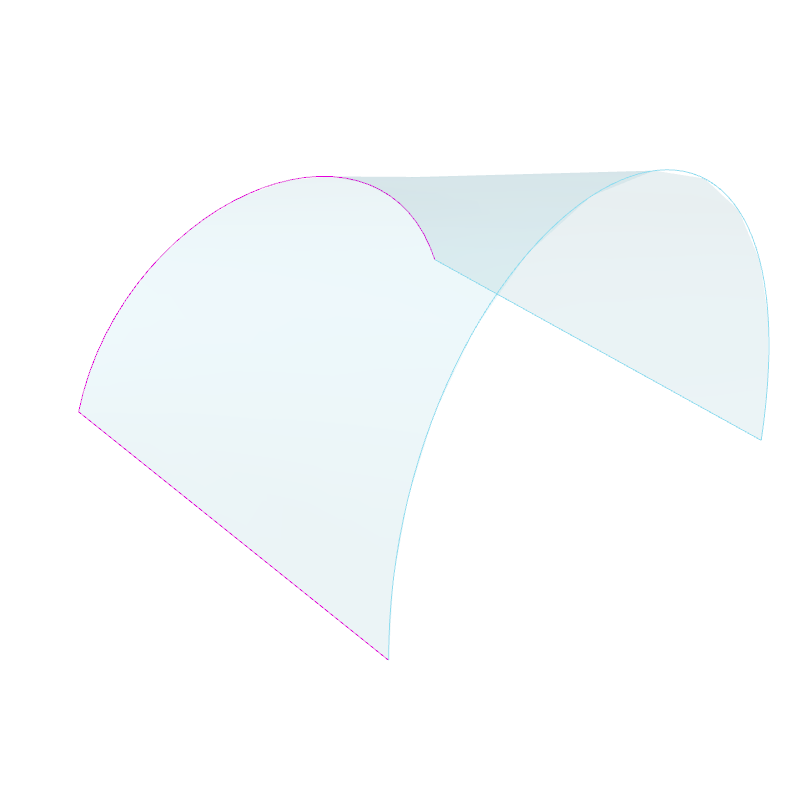
Uniclastic: Conoid (Conical paraboloid)
In this case, one of them grows in length, but the other still remains straight. Since one of the dimensions remains straight, it’s still a single curved surface – capable of being flattened without changing the area. Singly curved surfaced may also be referred to as uniclastic or monoclastic.
7.2 – Double Curved Surfaces
These can be classified as synclastic or anticlastic, and are non-developable surfaces. If made of paper, you could not flatten them without tearing, folding or crumpling them.
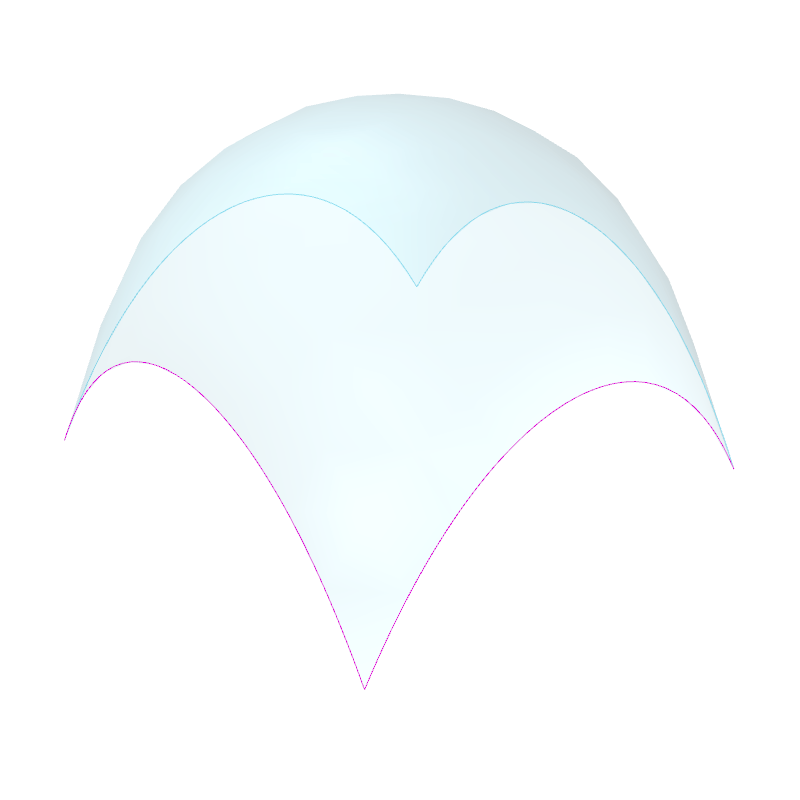
In this case, both curves happen to be identical, but what’s important is that both dimensions are curving in the same direction. In this orientation, the dome is also under compression everywhere.
The surface of the earth is double curved, synclastic – non-developable. “The surface of a sphere cannot be represented on a plane without distortion,” a topic explored by Michael Stevens: https://www.youtube.com/watch?v=2lR7s1Y6Zig
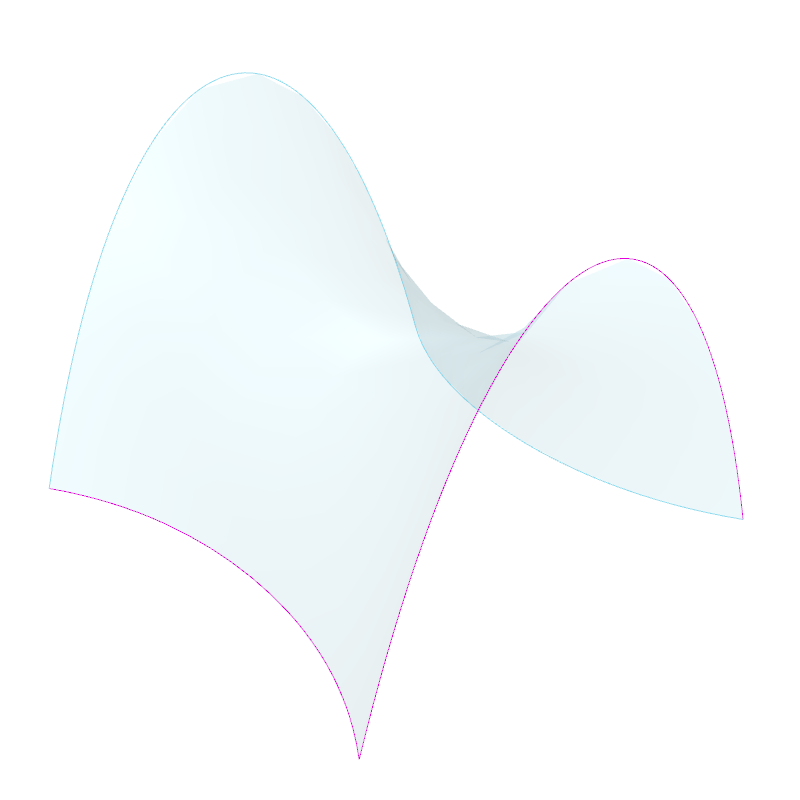
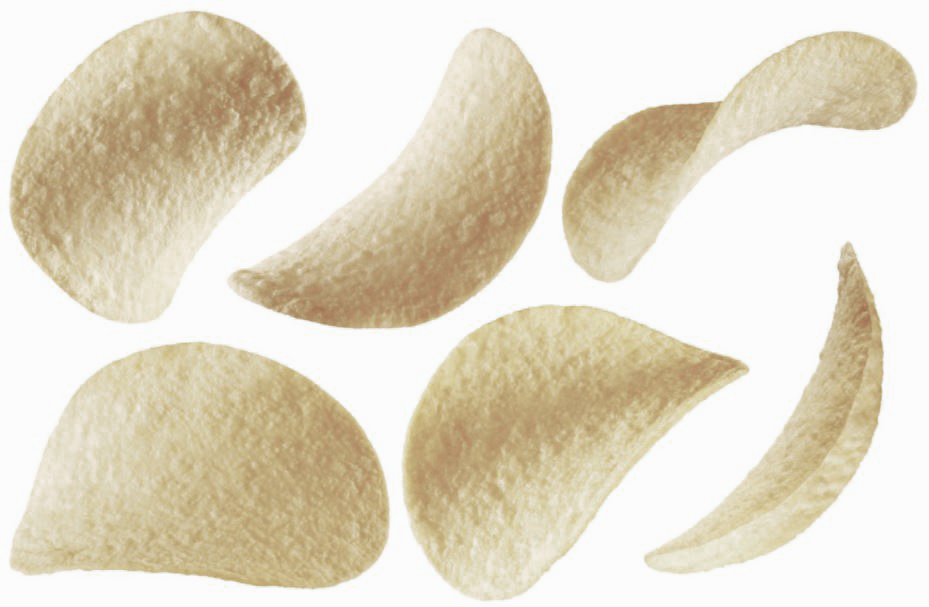
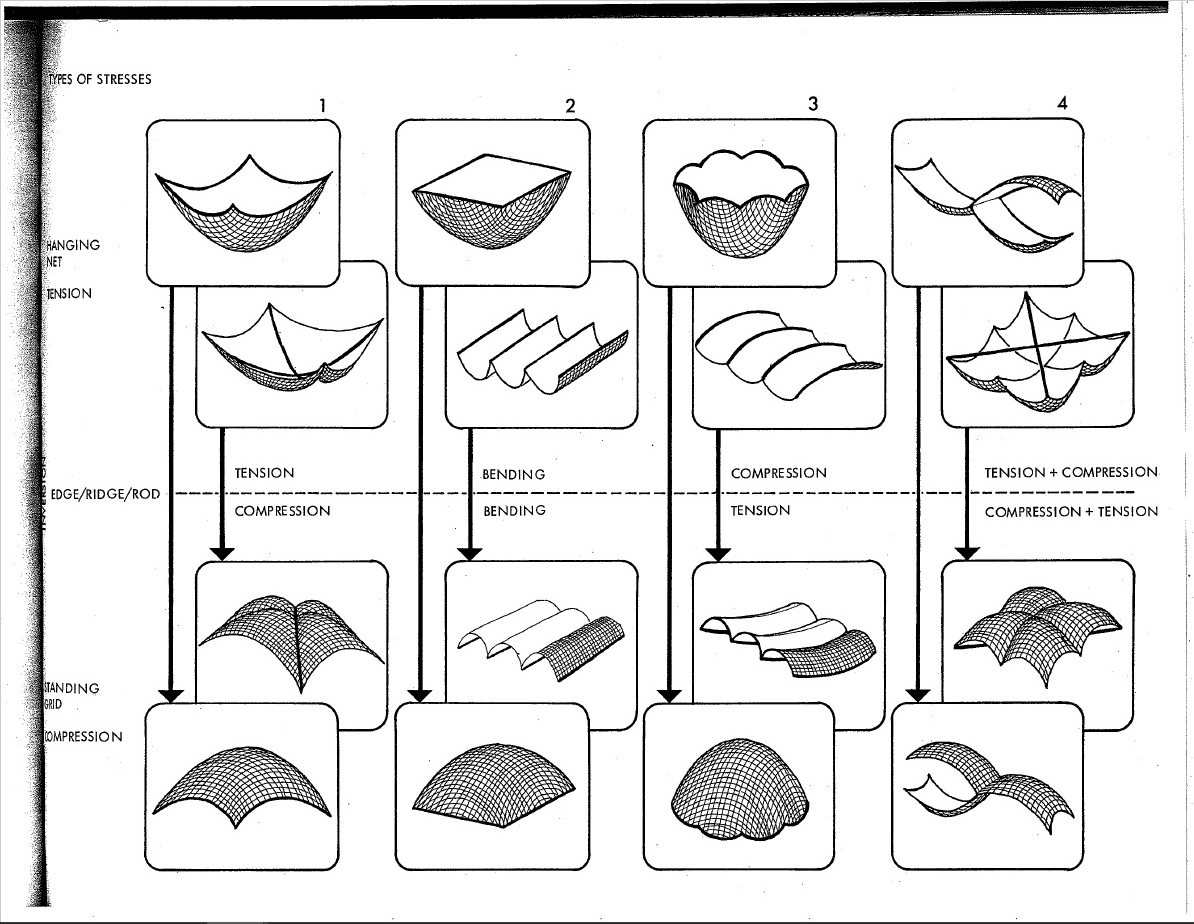
7.3 – Translation vs Revolution
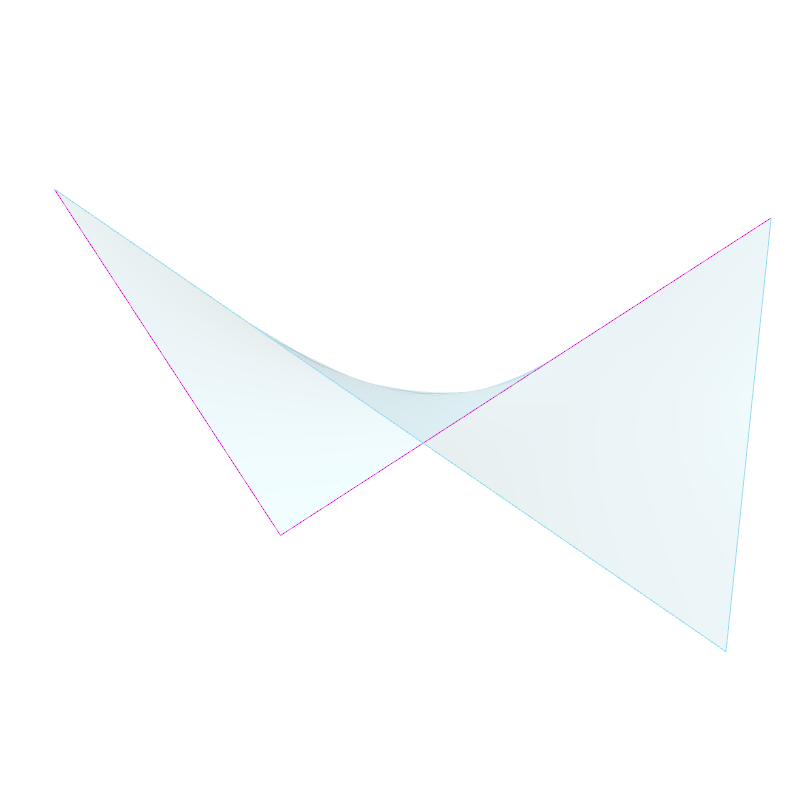
This shape was achieved by sweeping a straight line over a straight path at one end, and another straight path at the other. This will work as long as both rails are not parallel. Although I find this shape perplexing; it’s double curvature that you can create with straight lines, yet non-developable, and I can’t explain it..
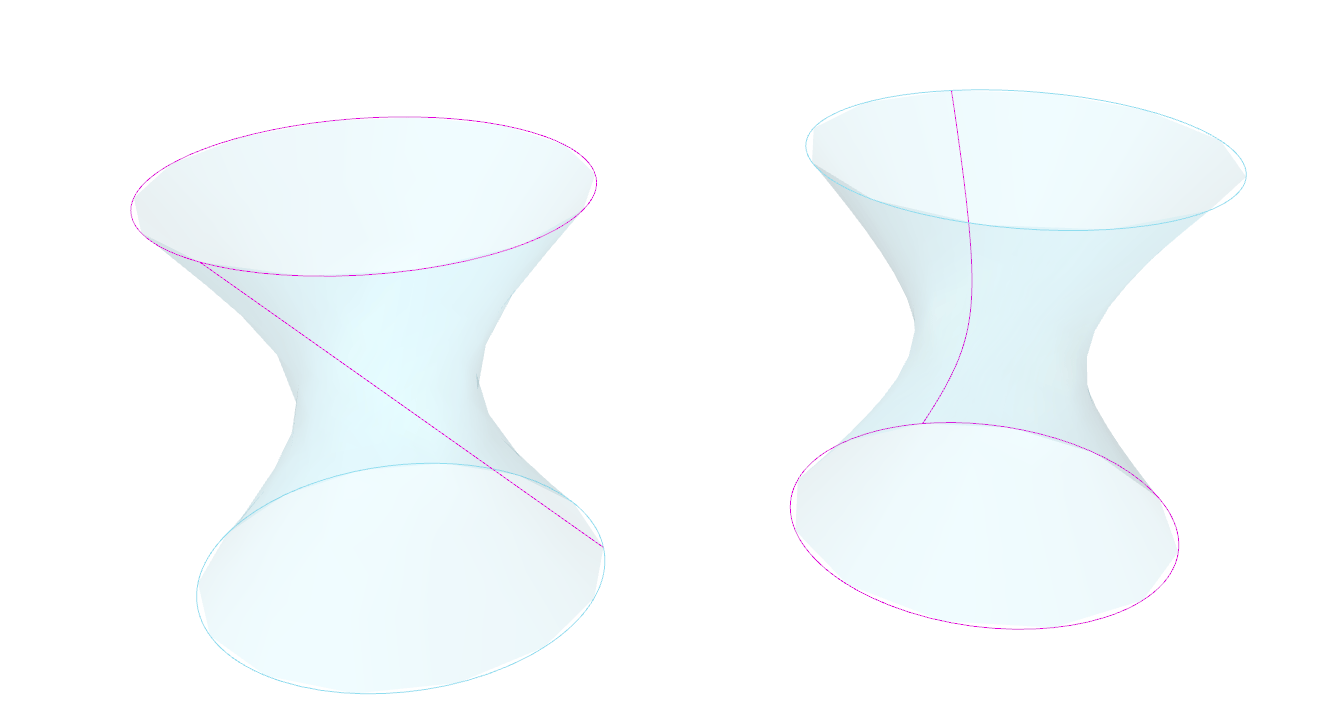
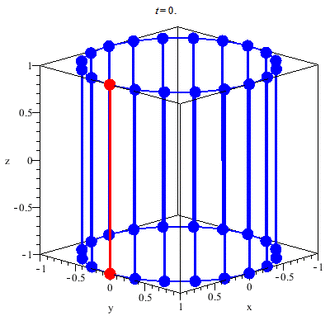
The hyperboloid has been a popular design choice for (especially nuclear cooling) towers. It has excellent tensile and compressive properties, and can be built with straight members. This makes it relatively cheap and easy to fabricate relative to it’s size and performance.
8.0 Geodesic Curves
These are singly curved curves, although that does sound confusing. A simple way to understand what geodesic curves are, is to give them a width. As previously explored, we know that curves can inhabit, and fill, two-dimensional space. However, you can’t really observe the twists and turns of a shape that has no thickness.
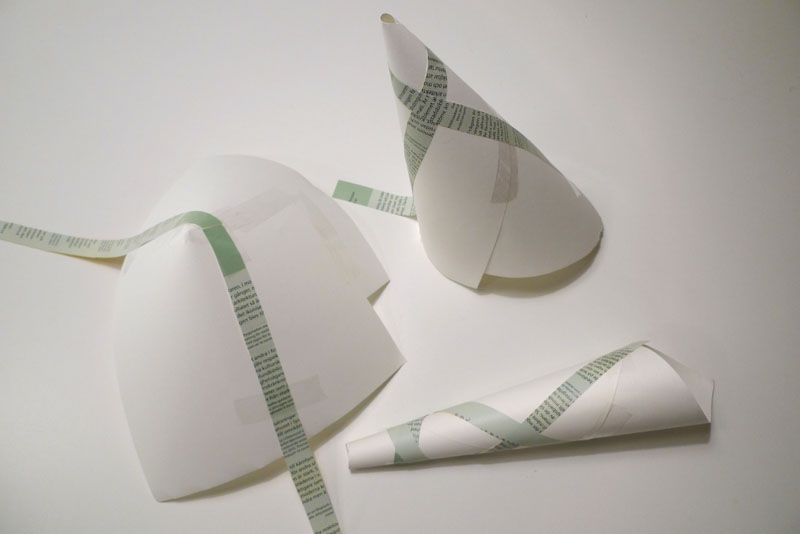
A ribbon is essentially a straight line with thickness, and when used to follow the curvature of a surface (as seen above), the result is a plank line. The term ‘plank line’ can be defined as a line with an given width (like a plank of wood) that passes over a surface and does not curve in the tangential plane, and whose width is always tangential to the surface.
Since one-dimensional curves do have an orientation in digital modeling, geodesic curves can be described as the one-dimensional counterpart to plank lines, and can benefit from the same definition.
The University of Southern California published a paper exploring the topic further: http://papers.cumincad.org/data/works/att/f197.content.pdf
8.1 – Basic Grid Setup
For simplicity, here’s a basic grid set up on a flat plane:
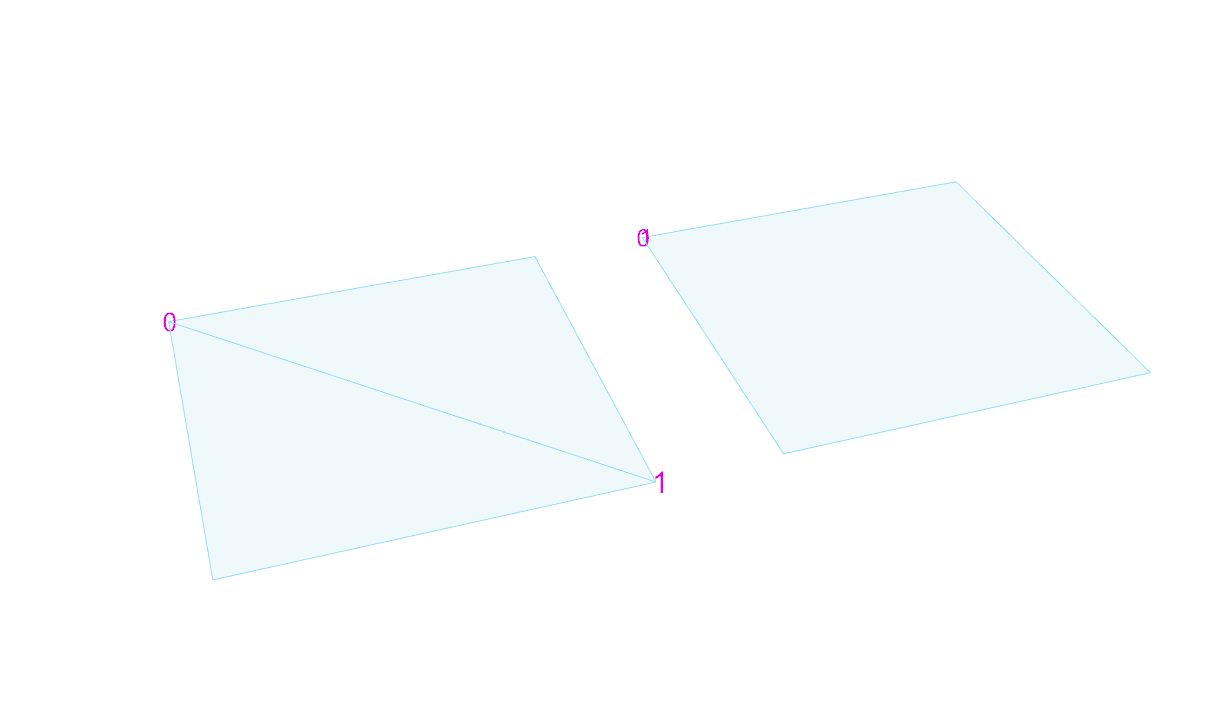
We start by defining two points anywhere along the edge of the surface. Then we find the geodesic curve that joins the pair. Of course it’s trivial in this case, since we’re dealing with a flat surface, but bear with me.
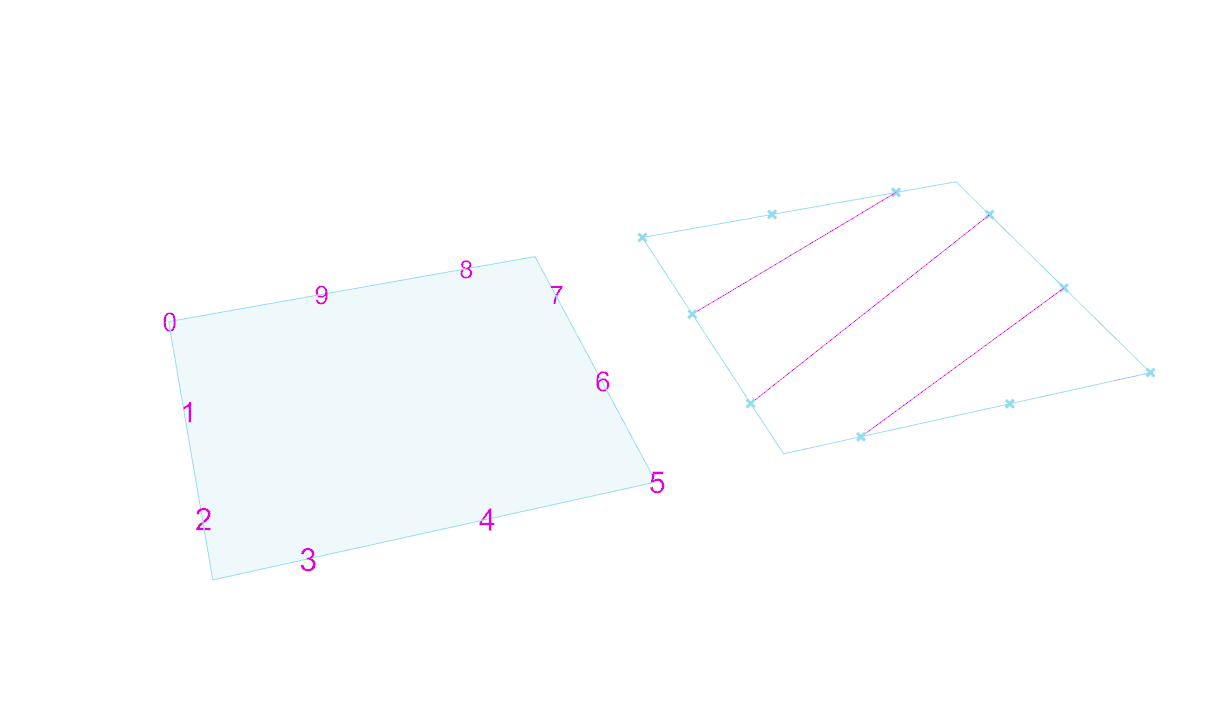
We can keep adding pairs of points along the edge. In this case they’re kept evenly spaced and uncrossing for the sake of a cleaner grid.
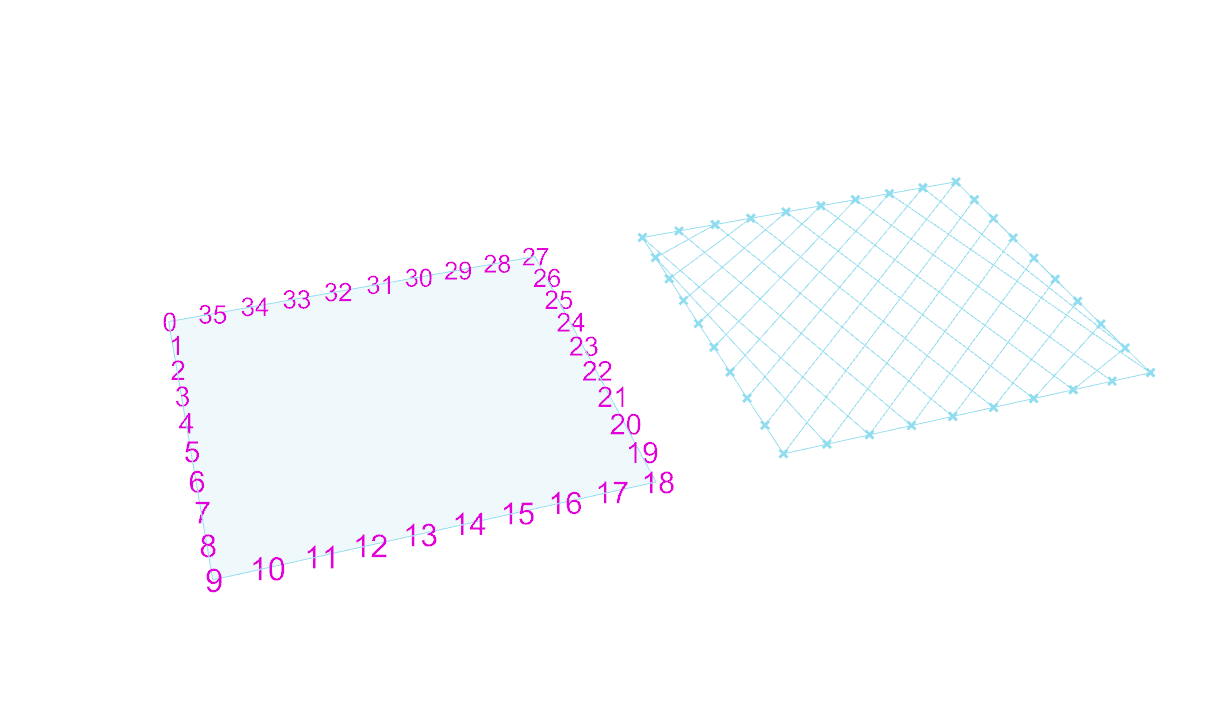
After that, it’s simply a matter of playing with density, as well as adding an additional set of antagonistic curves. For practicality, each set share the same set of base points.
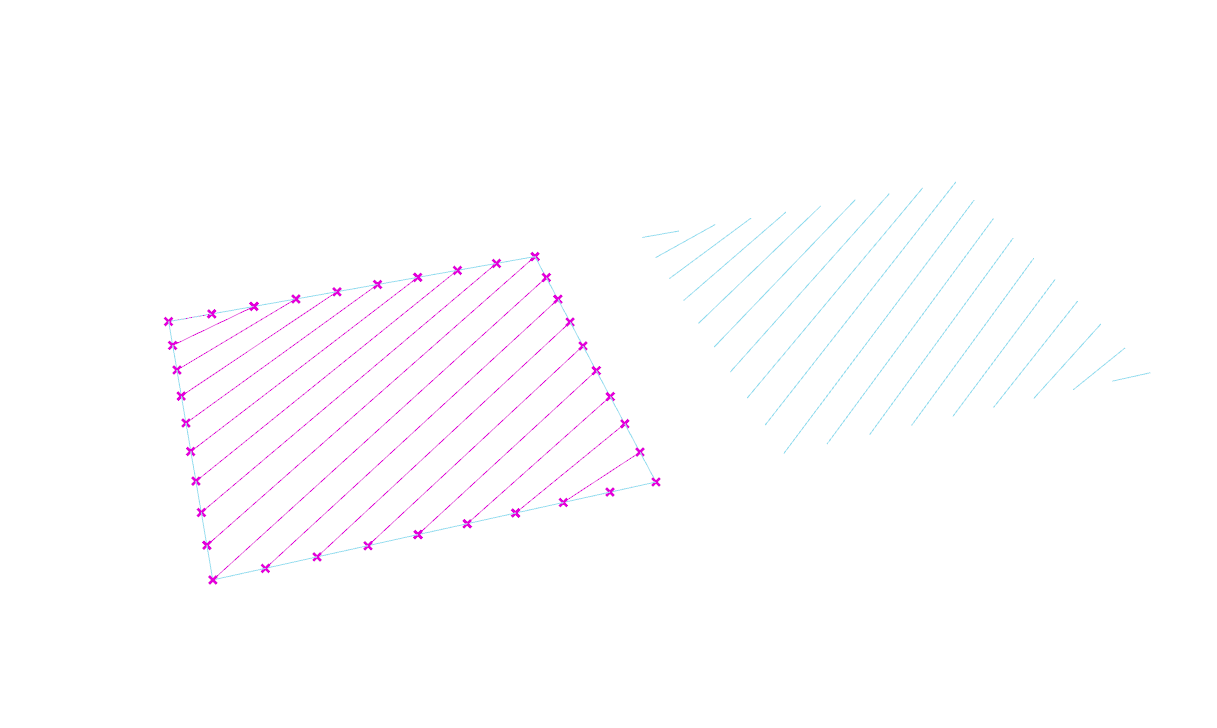
He’s an example of a grid where each set has their own set of anchors. While this does show the flexibility of a grid, I think it’s far more advantageous for them to share the same base points.
8.2 – Basic Gridshells
The same principle is then applied to a series of surfaces with varied types of curvature.
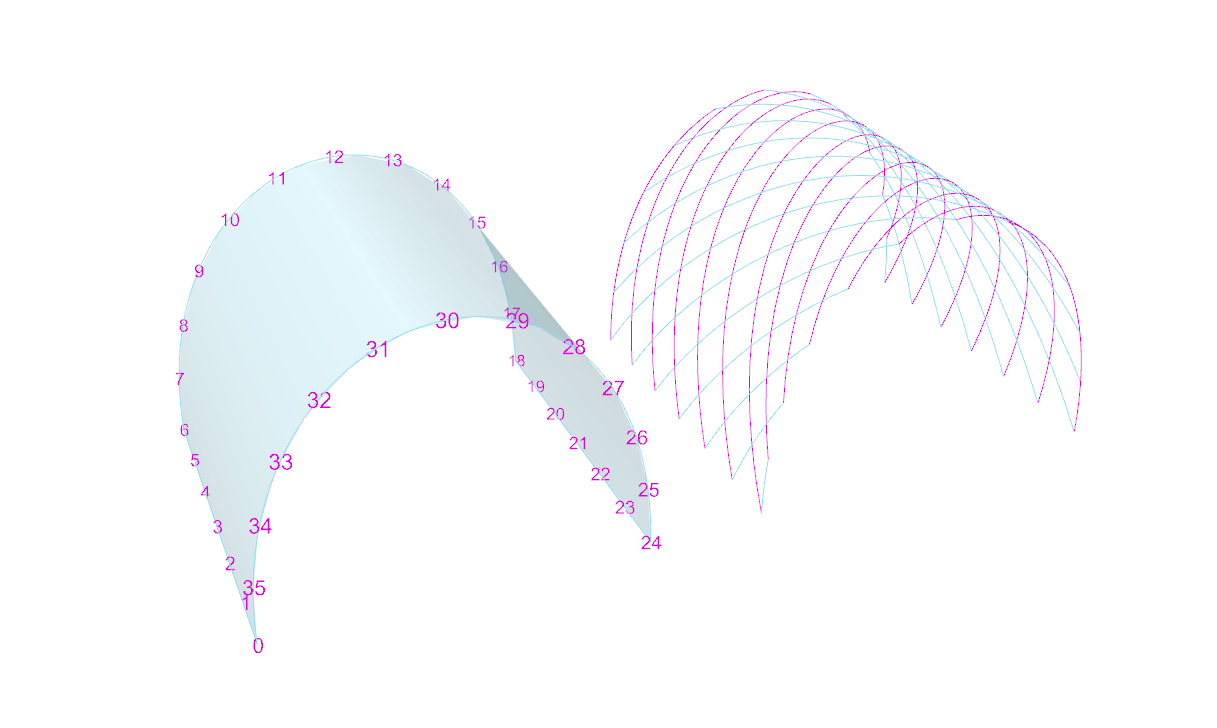
First comes the shell (a barrel vault in this case), then comes the grid. The symmetrical nature of this surface translates to a pretty regular (and also symmetrical) gridshell. The use of geodesic curves means that these gridshells can be fabricated using completely straight material, that only necessitate single curvature.
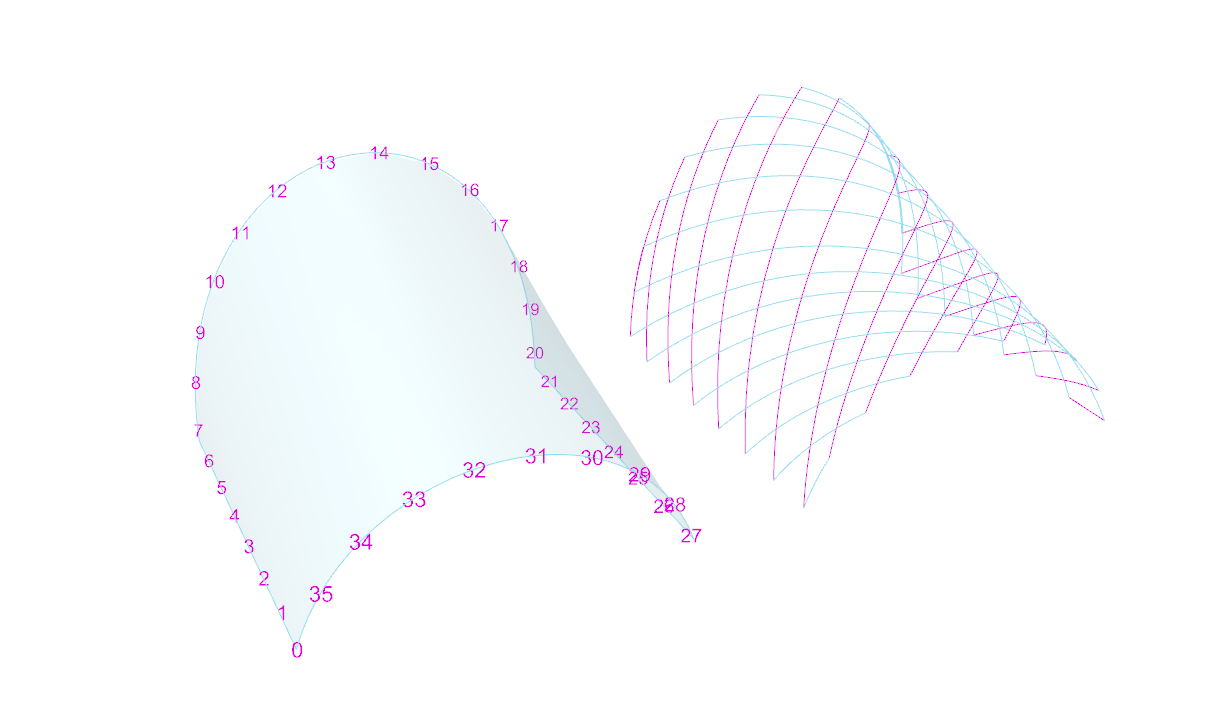
The same grid used on a conical surface starts to reveal gradual shifts in the geometry’s spacing. The curves always search for the path of least resistance in terms of bending.
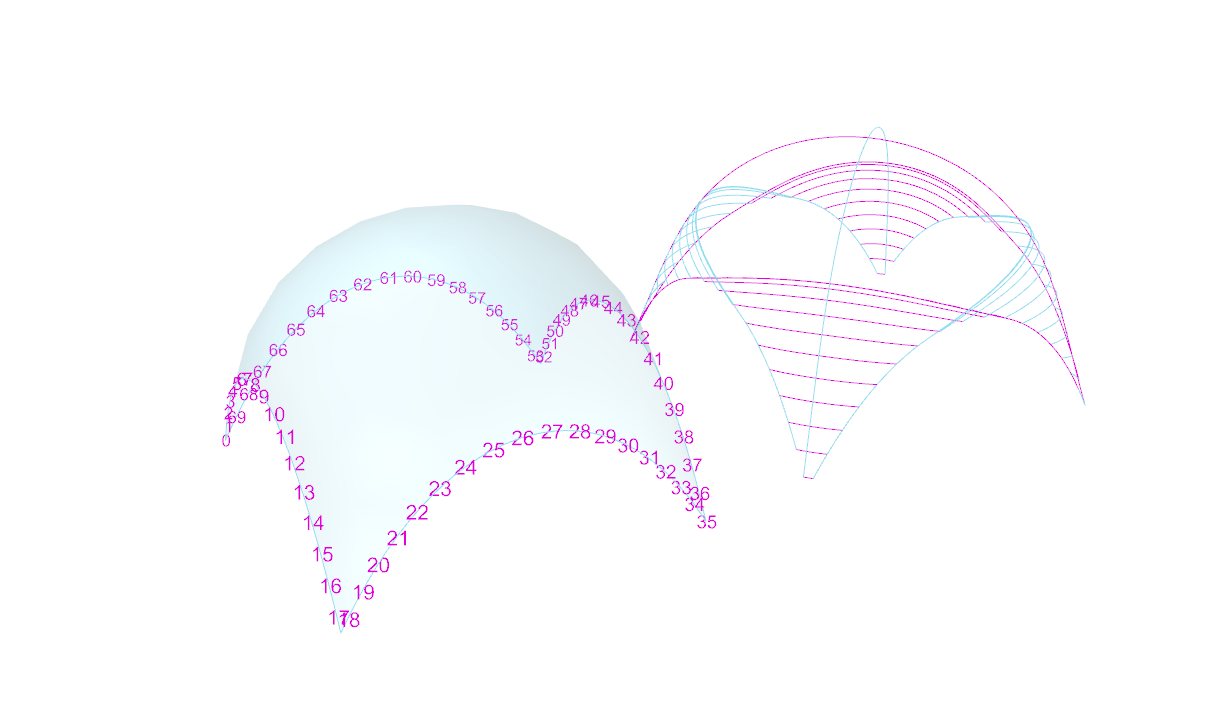
This case illustrates the nature of geodesic curves quite well. The dome was free-formed with a relatively high degree of curvature. A small change in the location of each anchor point translates to a large change in curvature between them. Each curve looks for the shortest path between each pair (without leaving the surface), but only has access to single curvature.
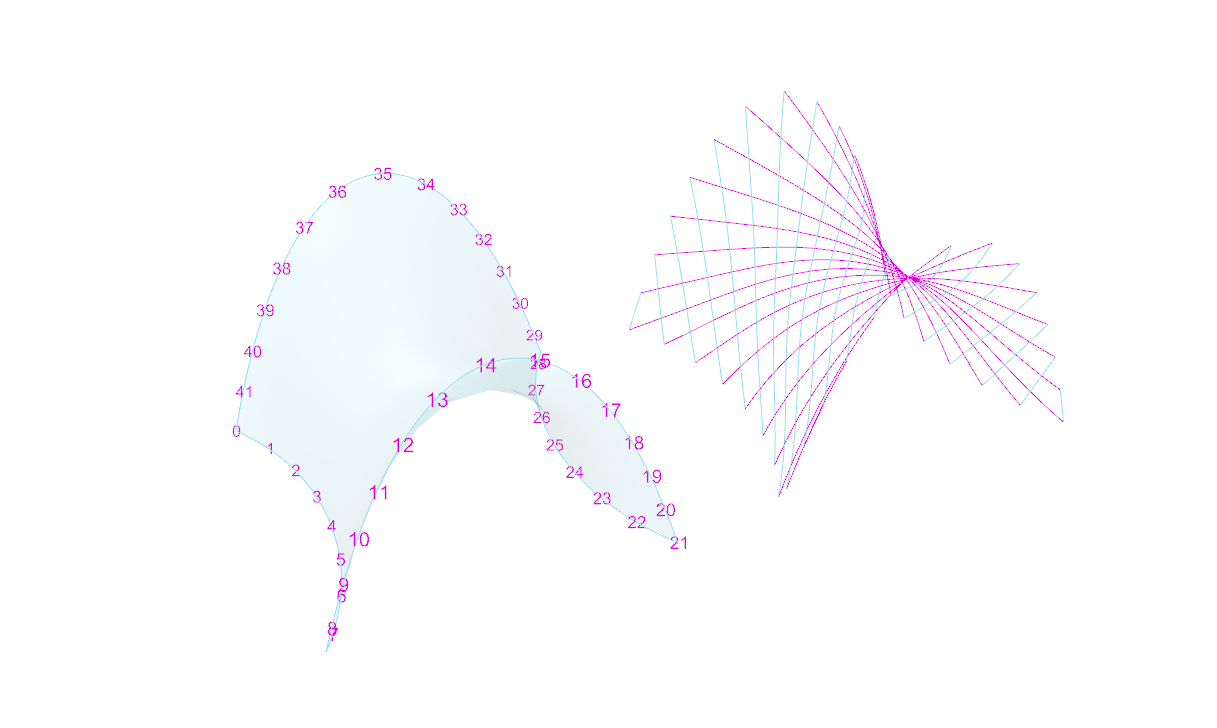
Structurally speaking, things get much more interesting with anticlastic curvature. As previously stated, each member will behave differently based on their relative curvature and orientation in relation to the surface. Depending on their location on a gridshell, plank lines can act partly in compression and partly in tension.
On another note:
While geodesic curves make it far more practical to fabricate shells, they are not a strict requirement. Using non-geodesic curves just means more time, money, and effort must go into the fabrication of each component. Furthermore, there’s no reason why you can’t use alternate grid patterns. In fact, you could use any pattern under the sun – any motif your heart desires (even tessellated puppies.)
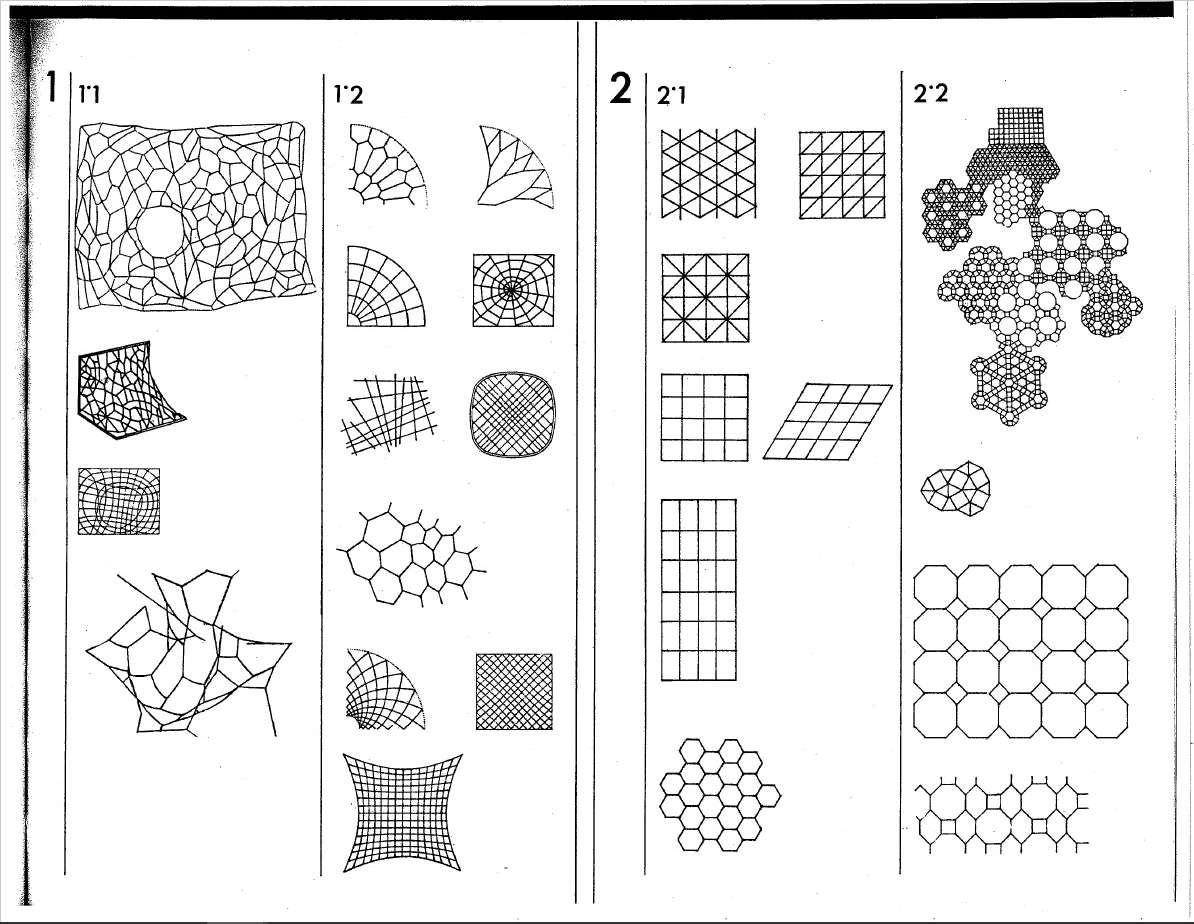
Here are just a few of the endless possible pattern. They all have their advantages and disadvantages in terms of fabrication, as well as structural potential.
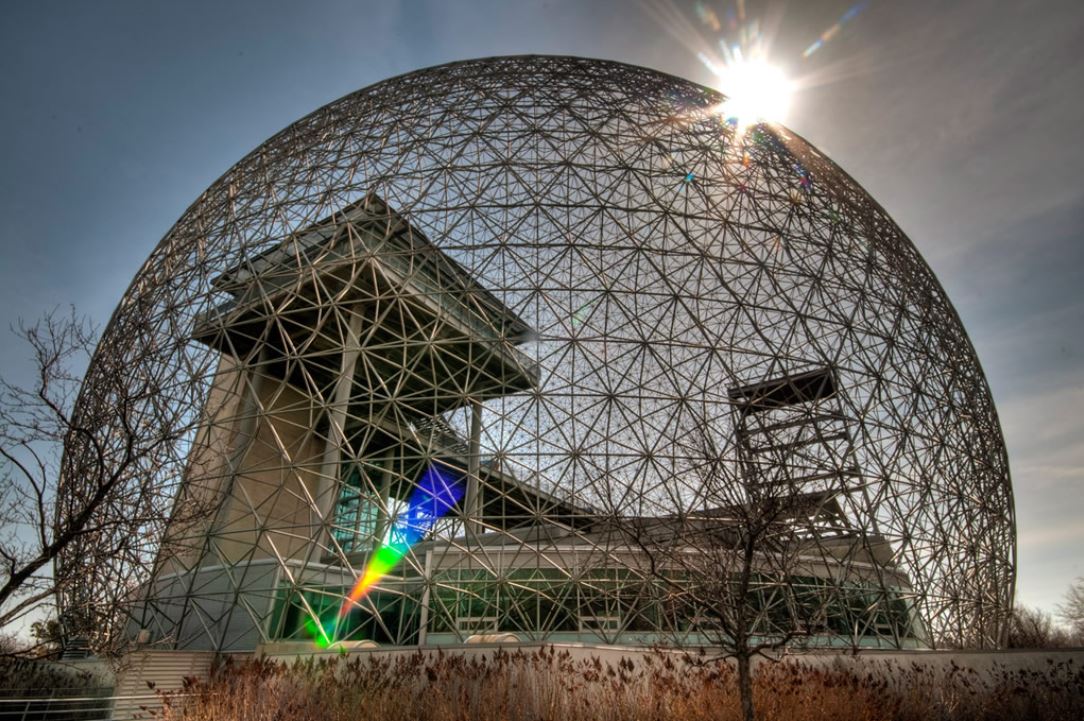
Gridshells with large amounts of triangulation, such as Buckminster Fuller’s geodesic spheres, typically perform incredibly well structurally. These structure are also highly efficient to manufacture, as their geometry is extremely repetitive.
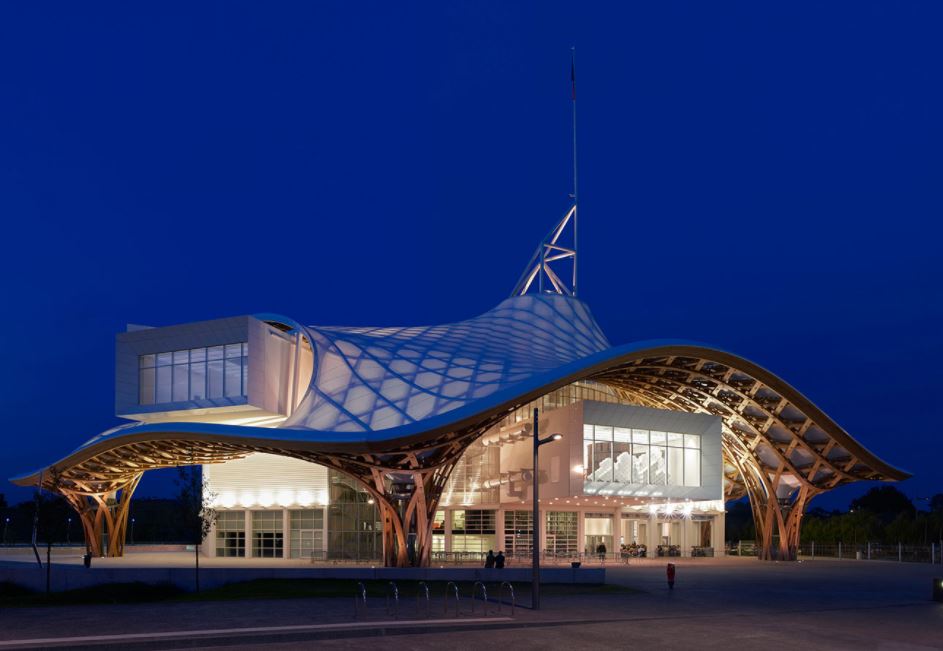
Gridshells with highly irregular geometry are far more challenging to fabricate. In this case, each and every piece had to be custom made to shape; I imagine it must have costed a lot of money, and been a logistical nightmare. Although it is an exceptionally stunning piece of architecture (and a magnificent feat of engineering.)
8.3 – Gridshell Construction
In our case, building these shells is simply a matter of converting the geodesic curves into planks lines.
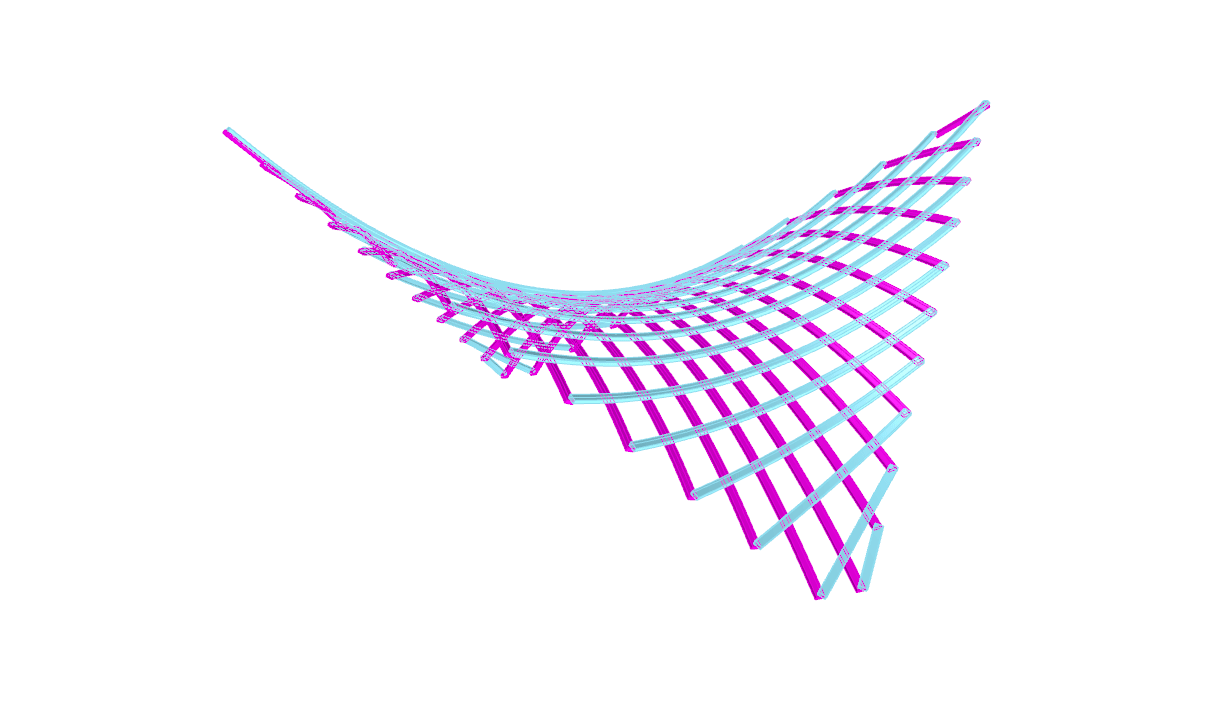
The whole point of using them in the first place is so that we can make them out of straight material that don’t necessitate double curvature. This example is rotating so the shape is easier to understand. It’s grid is also rotating to demonstrate the ease at which you can play with the geometry.
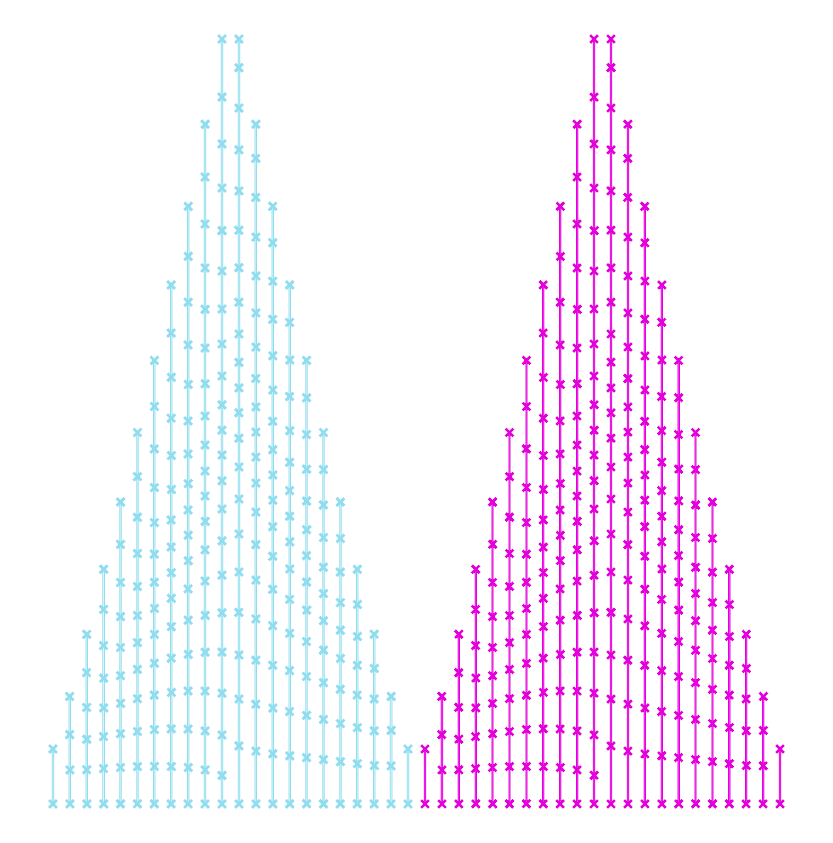
This is what you get by taking those plank lines and laying them flat. In this case both sets are the same because the shell happens to the identicall when flipped. Being able to use straight material means far less labour and waste, which translates to faster, and or cheaper, fabrication.
An especially crucial aspect of gridshells is the bracing. Without support in the form of tension ties, cable ties, ring beams, anchors etc., many of these shells can lay flat. This in and of itself is pretty interesting and does lends itself to unique construction challenges and opportunities. This isn’t always the case though, since sometimes it’s the geometry of the joints holding the shape together (like the geodesic spheres.) Sometimes the member are pre-bent (like Pompidou-Metz.) Although pre-bending the timber kinda strikes me as cheating thought.. As if it’s not a genuine, bona fide gridshell.
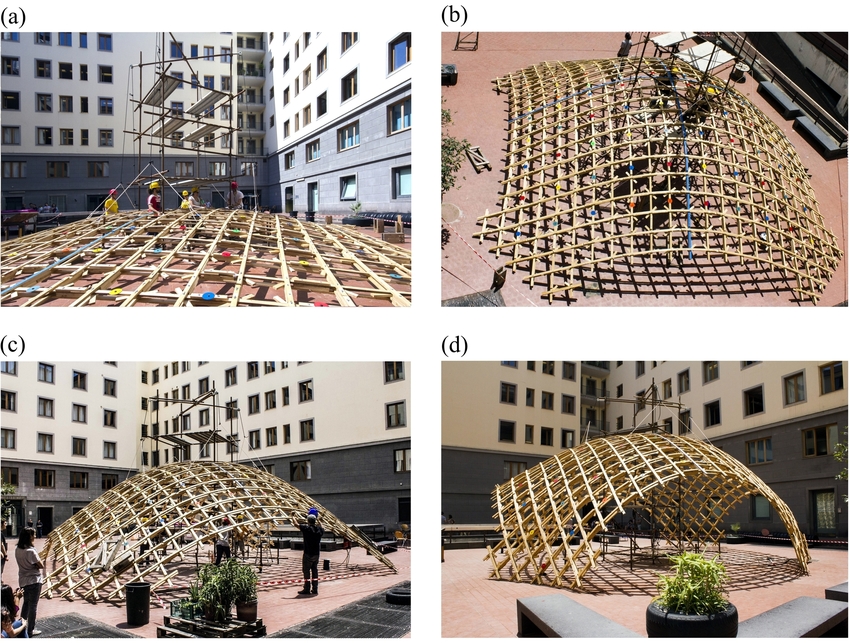
This is one of the original build method, where the gridshell is assembled flat, lifted into shape, then locked into place.
9.0 Form Finding
Having studied the basics makes exploring increasingly elaborate geometry more intuitive. In principal, most of the shells we’ve looked are known to perform well structurally, but there are strategies we can use to focus specifically on performance optimization.
9.0 – Minimal Surfaces
These are surfaces that are locally area-minimizing – surfaces that have the smallest possible area for a defined boundary. They necessarily have zero mean curvature, i.e. the sum of the principal curvatures at each point is zero. Soap bubbles are a great example of this phenomenon.
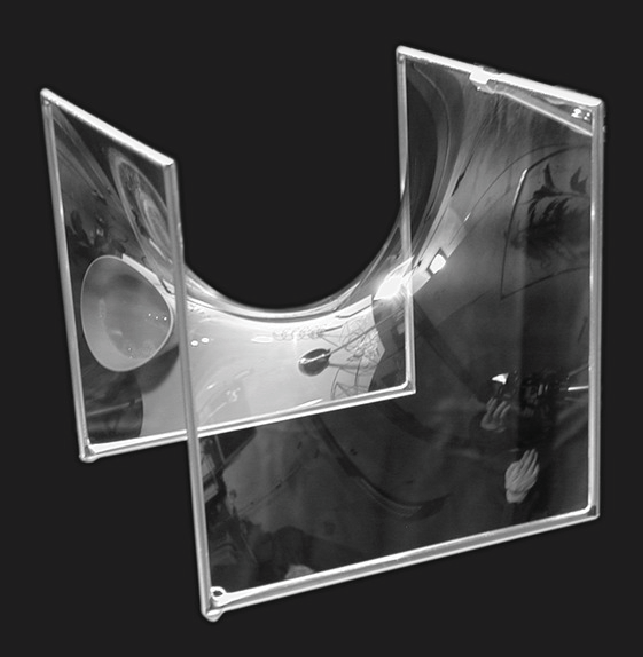
Hyperbolic Paraboloid Soap Bubble [Source: Serfio Musmeci’s “Froms With No Name” and “Anti-Polyhedrons”]Soap film inherently forms shapes with the least amount of area needed to occupy space – that minimize the amount of material needed to create an enclosure. Surface tension has physical properties that naturally relax the surface’s curvature.
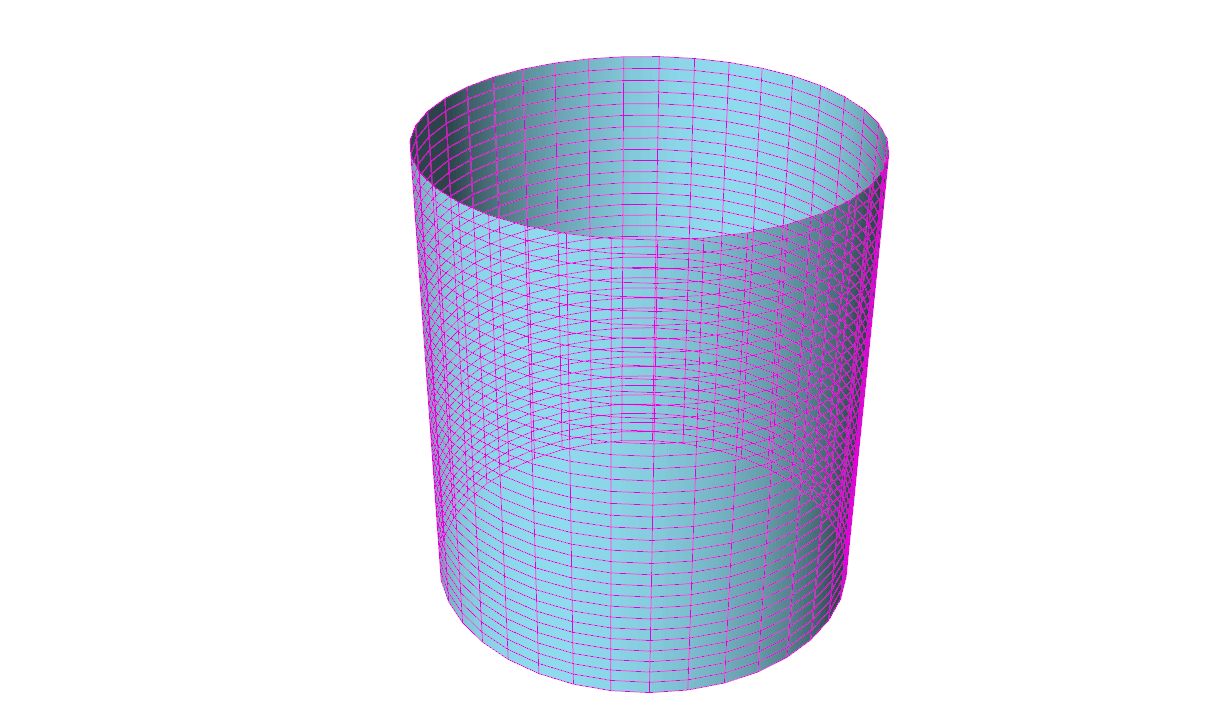
We can simulate surface tension by using a network of curves derived from a given shape. Applying varies material properties to the mesh results in a shape that can behaves like stretchy fabric or soap. Reducing the rest length of each of these curves (while keeping the edges anchored) makes them pull on all of their neighbours, resulting in a locally minimal surface.
Here are a few more examples of minimal surfaces you can generate using different frames (although I’d like stress that the possibilities are extremely infinite.) The first and last iterations may or may not count, depending on which of the many definitions of minimal surfaces you use, since they deal with pressure. You can read about it in much greater detail here: https://tinyurl.com/ya4jfqb2

Here we have one of the most popular examples of minimal surface geometry in architecture. The shapes of these domes were derived from a series of studies using clustered soap bubbles. The result is a series of enormous shells built with an impressively small amount of material.
Triply periodic minimal surfaces are also a pretty cool thing (surfaces that have a crystalline structure – that tessellate in three dimensions):
9.2 – Catenary Structures
Another powerful method of form finding has been to let gravity dictate the shapes of structures. In physics and geometry, catenary (derived from the Latin word for chain) curves are found by letting a chain, rope or cable, that has been anchored at both end, hang under its own weight. They look similar to parabolic curves, but perform differently.
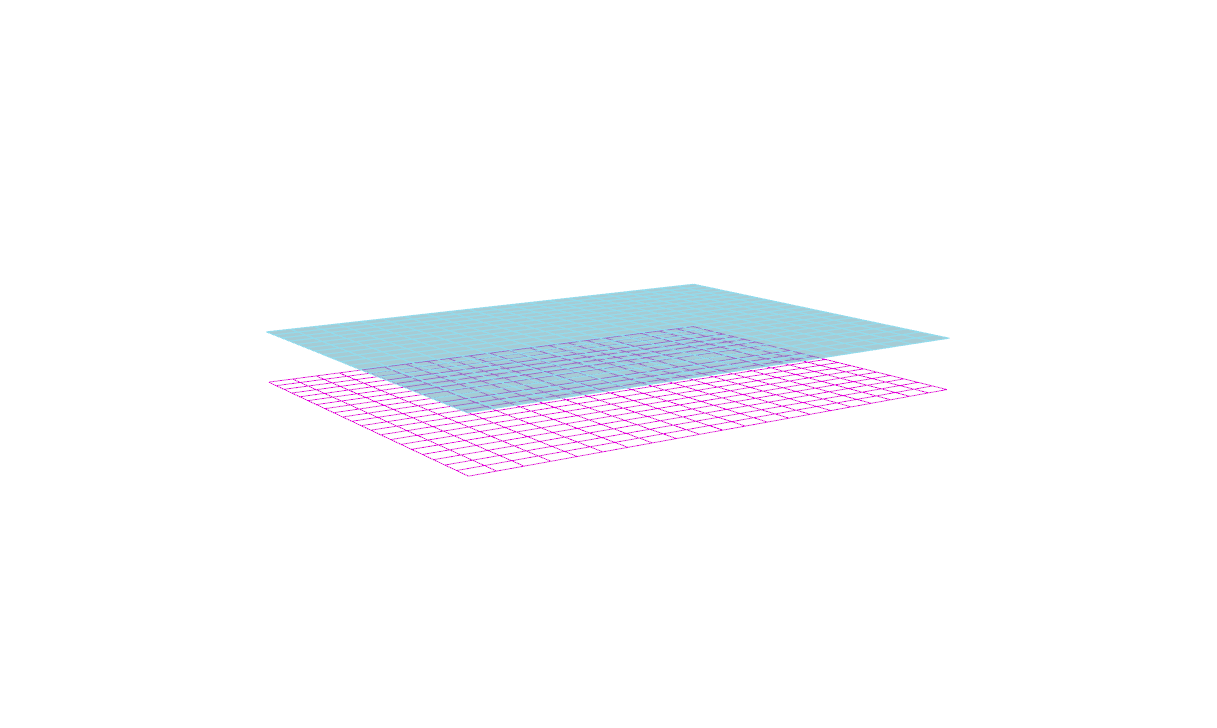
A net shown here in magenta has been anchored by the corners, then draped under simulated gravity. This creates a network of hanging curves that, when converted into a surface, and mirrored, ultimately forms a catenary shell. This geometry can be used to generate a gridshell that performs exceptionally well under compression, as long as the edges are reinforced and the corners are braced.
While I would be remiss to not mention Antoni Gaudí on the subject of catenary structure, his work doesn’t particularly fall under the category of gridshells. Instead I will proceed to gawk over some of the stunning work by Frei Otto.
Of course his work explored a great deal more than just catenary structures, but he is revered for his beautiful work on gridshells. He, along with the Institute for Lightweight Structures, have truly been pioneers on the front of theoretical structural engineering.
9.3 – Biomimicry in Architecture
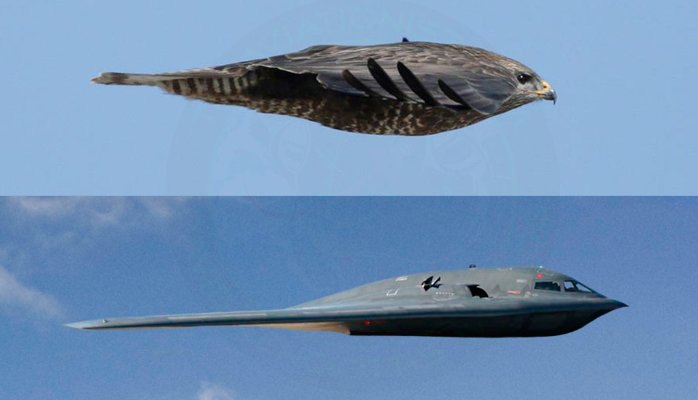
Frei Otto is a fine example of ecological literacy at its finest. A profound curiosity of the natural world greatly informed his understanding of structural technology. This was all nourished by countless inquisitive and playful investigations into the realm of physics and biology. He even wrote a series of books on the way that the morphology of bird skulls and spiderwebs could be applied to architecture called Biology and Building. His ‘IL‘ series also highlights a deep admiration of the natural world.
Of course he’s the not the only architect renown their fascination of the universe and its secrets; Buckminster Fuller and Antoni Gaudí were also strong proponents of biomimicry, although they probably didn’t use the term (nor is the term important.)
Gaudí’s studies of nature translated into his use of ruled geometrical forms such as hyperbolic paraboloids, hyperboloids, helicoids etc. He suggested that there is no better structure than the trunk of a tree, or a human skeleton. Forms in biology tend to be both exceedingly practical and exceptionally beautiful, and Gaudí spent much of his life discovering how to adapt the language of nature to the structural forms of architecture.
Fractals were also an undisputed recurring theme in his work. This is especially apparent in his most renown piece of work, the Sagrada Familia. The varying complexity of geometry, as well as the particular richness of detail, at different scales is a property uniquely shared with fractal nature.
Antoni Gaudí and his legacy are unquestionably one of a kind, but I don’t think this is a coincidence. I believe the reality is that it is exceptionally difficult to peruse biomimicry, and especially fractal geometry, in a meaningful way in relation to architecture. For this reason there is an abundance of superficial appropriation of organic, and mathematical, structures without a fundamental understanding of their function. At its very worst, an architect’s approach comes down to: ‘I’ll say I got the structure from an animal. Everyone will buy one because of the romance of it.”
That being said, modern day engineers and architects continue to push this envelope, granted with varying levels of success. Although I believe that there is a certain level of inevitability when it comes to how architecture is influenced by natural forms. It has been said that, the more efficient structures and systems become, the more they resemble ones found in nature.
Euclid, the father of geometry, believed that nature itself was the physical manifestation of mathematical law. While this may seems like quite a striking statement, what is significant about it is the relationship between mathematics and the natural world. I like to think that this statement speaks less about the nature of the world and more about the nature of mathematics – that math is our way of expressing how the universe operates, or at least our attempt to do so. After all, Carl Sagan famously suggested that, in the event of extra terrestrial contact, we might use various universal principles and facts of mathematics and science to communicate.
Developing Space-Filling Fractals
Delving deeper into the world of mathematics, fractals, geometry, and space-filling curves.
Foreword
4.0 Classic Space-Filling
4.1 Early Examples
In 1890, Giuseppe Peano discovered the first of what would be called space-filing curves:


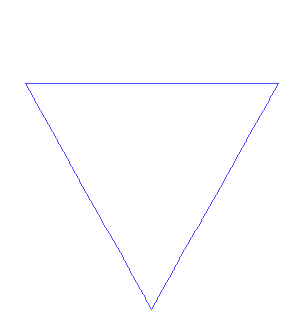
4.2 Later Examples
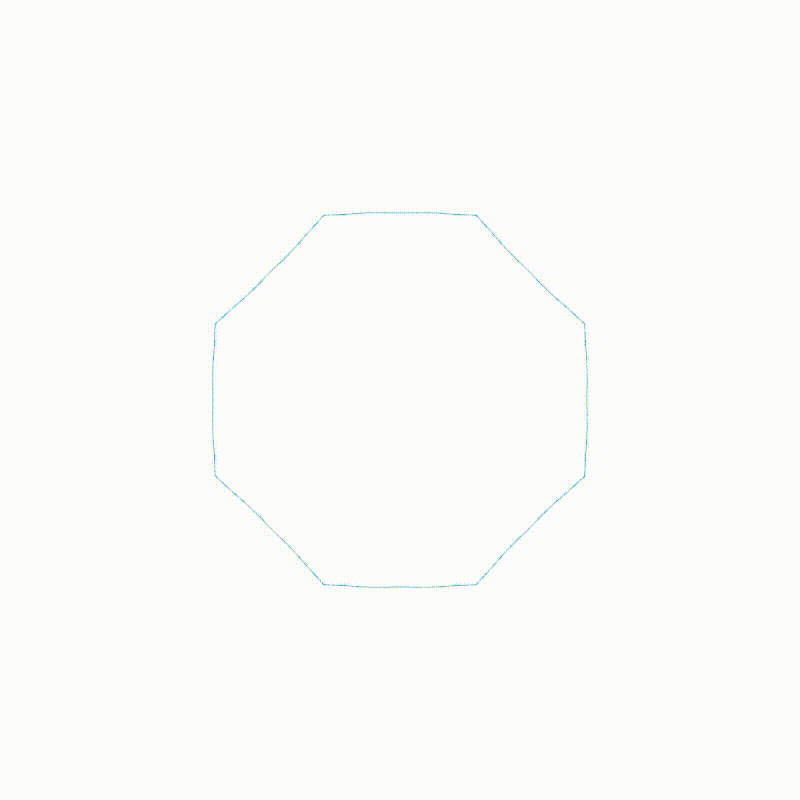
On A Strange Note:

5.0 Avant-Garde Space-Filling
5.1 The Traveling Salesman Problem
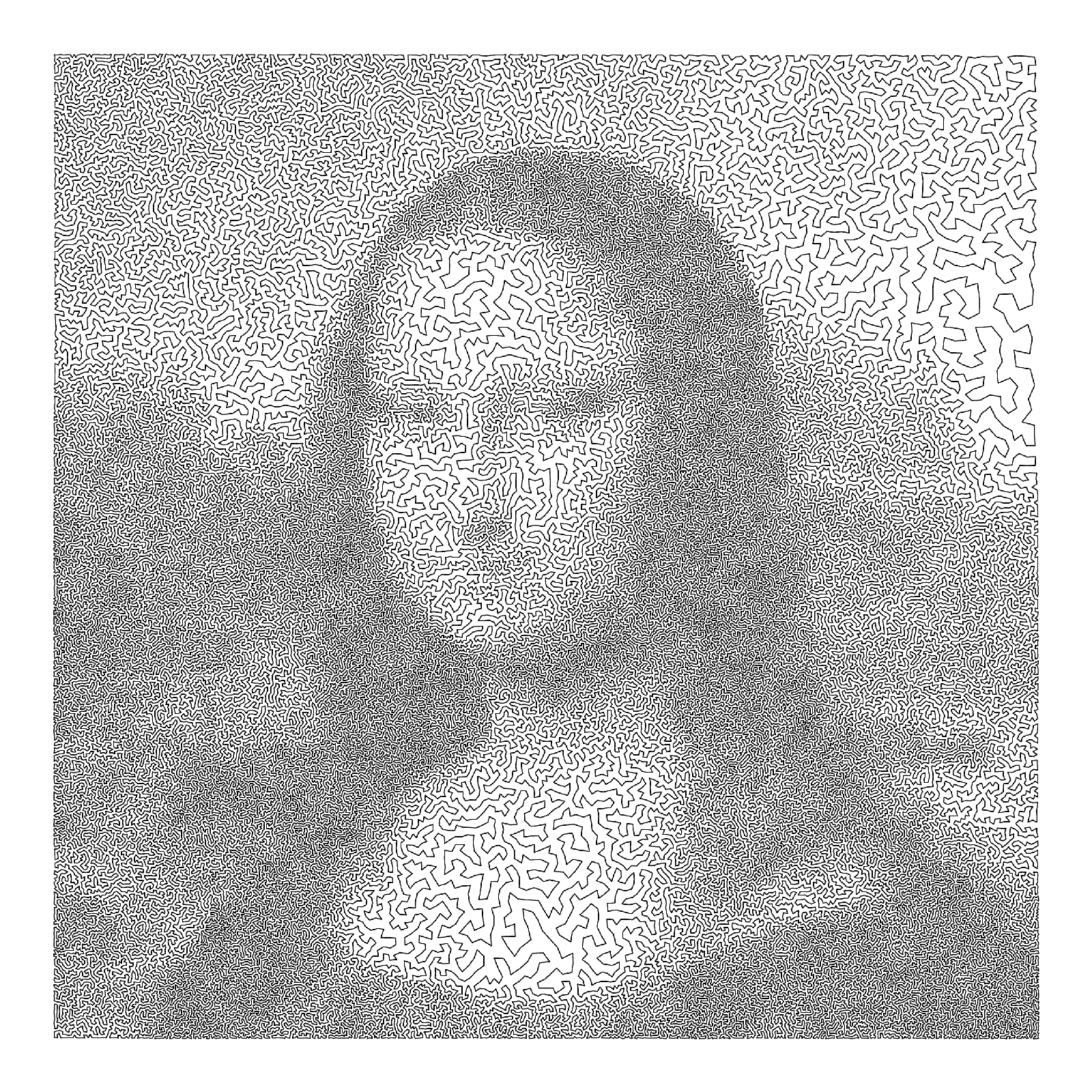
5.2 Differential Growth
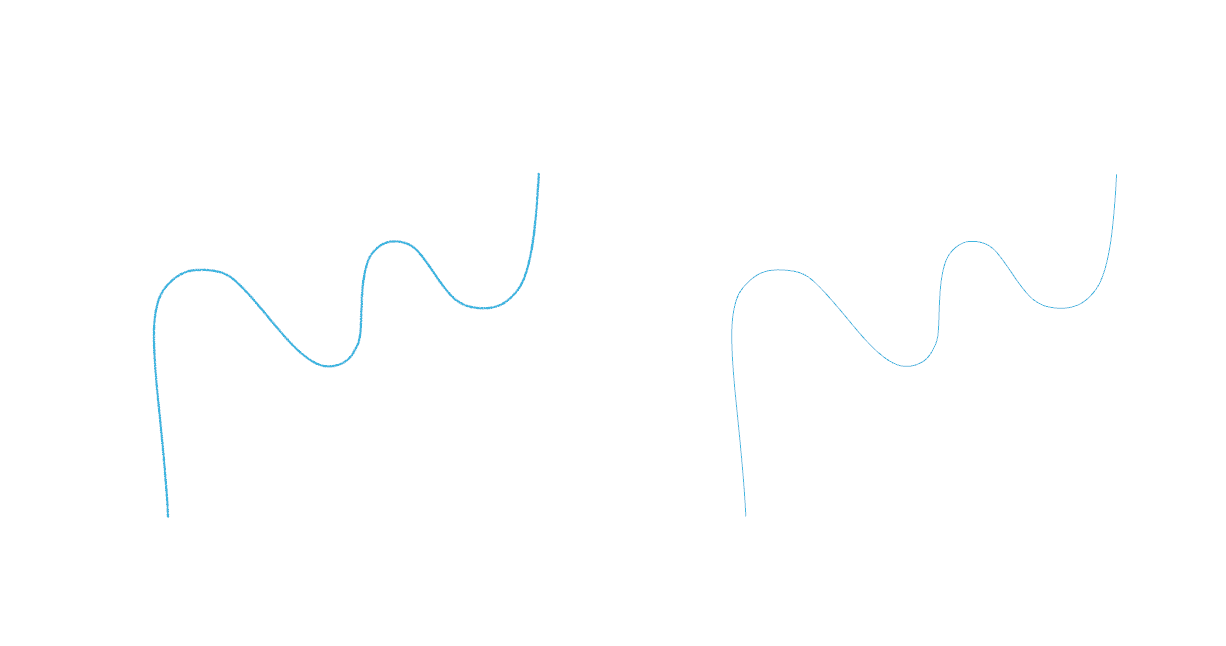
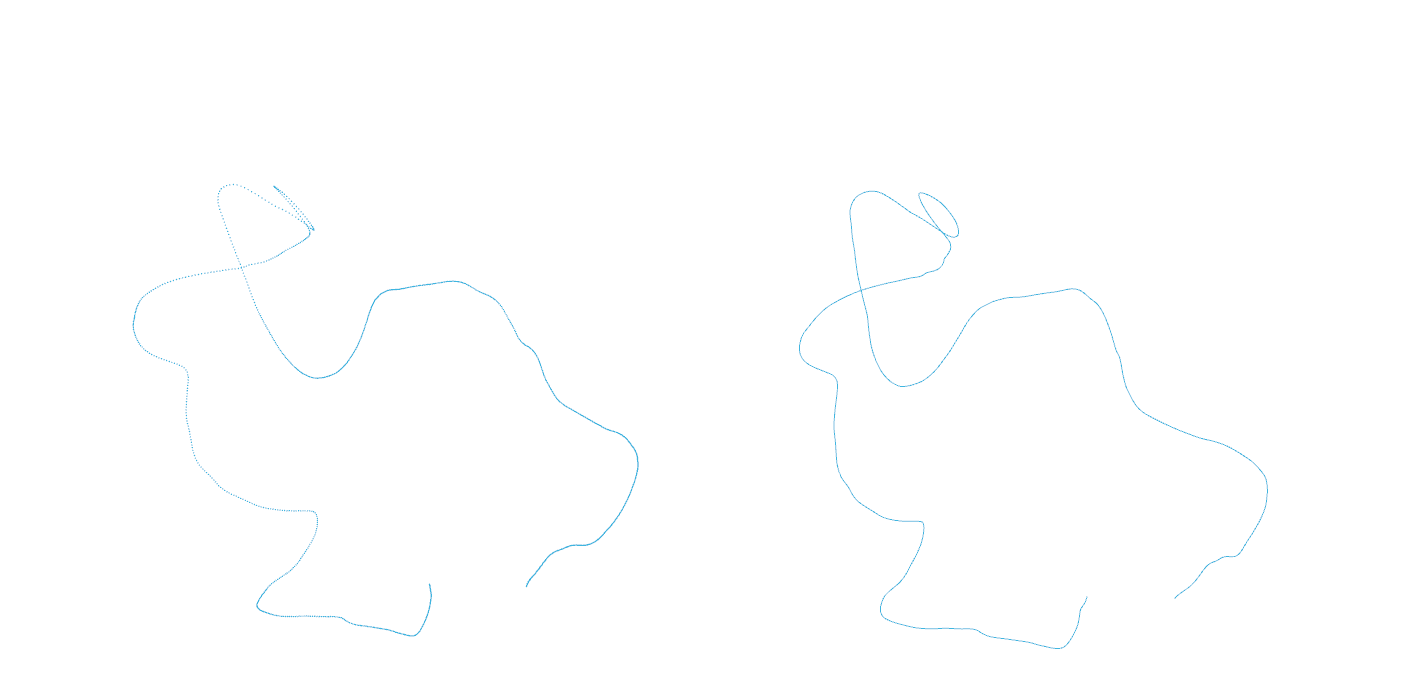
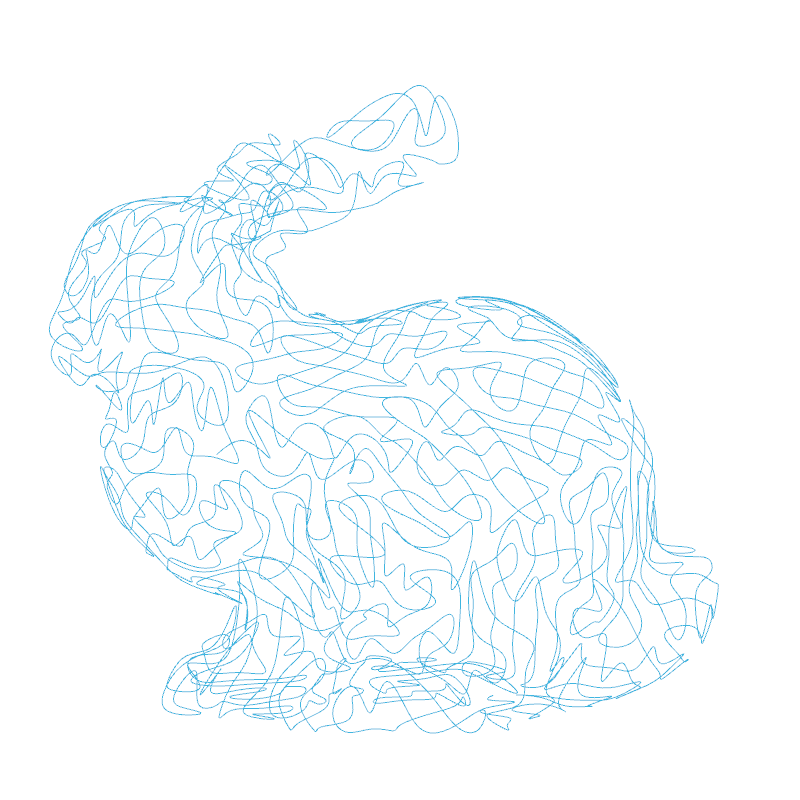


6.0 Developing Fractal Curves
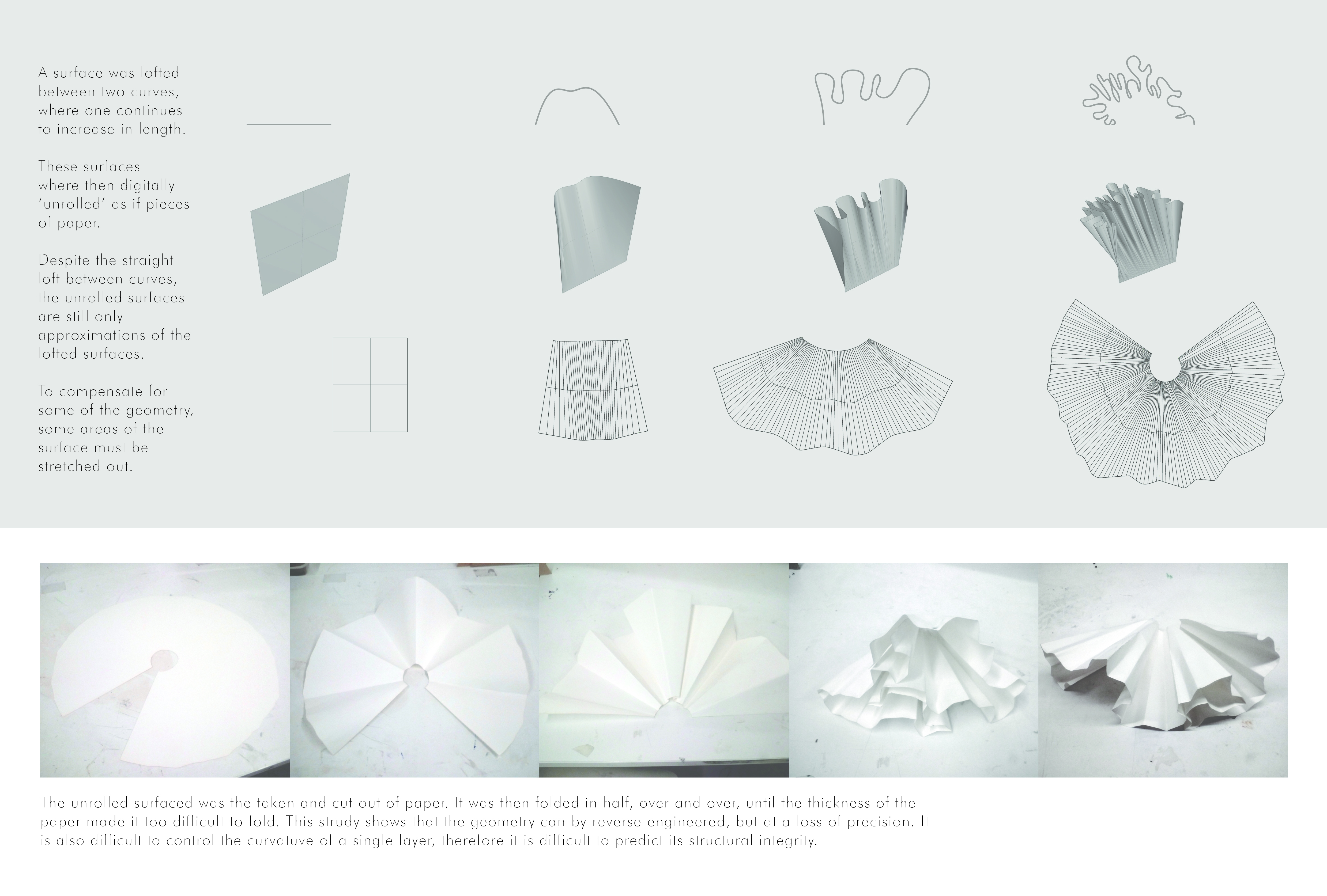
6.1 Dragon’s Feet
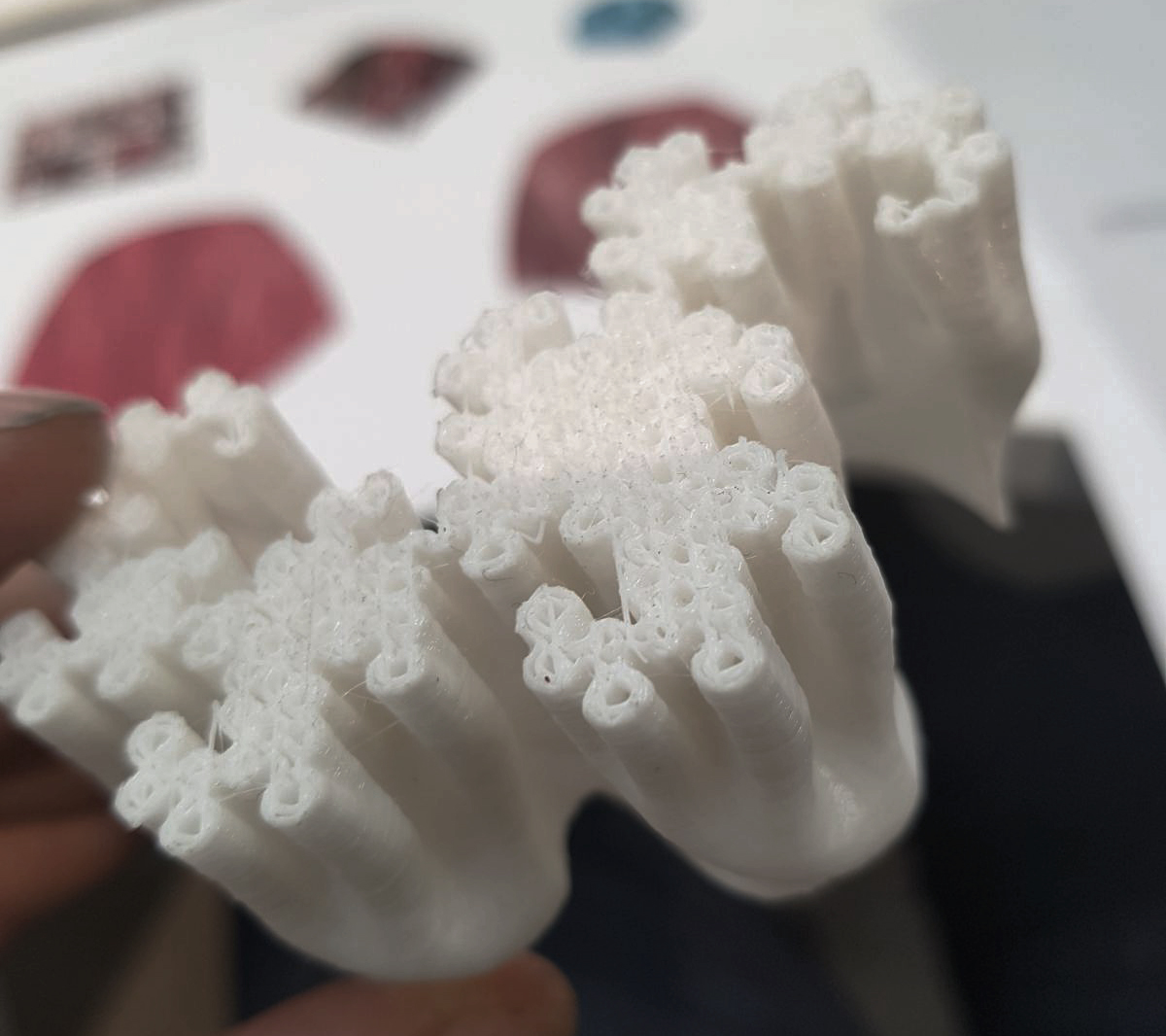
6.2 Hilbert’s Curtain
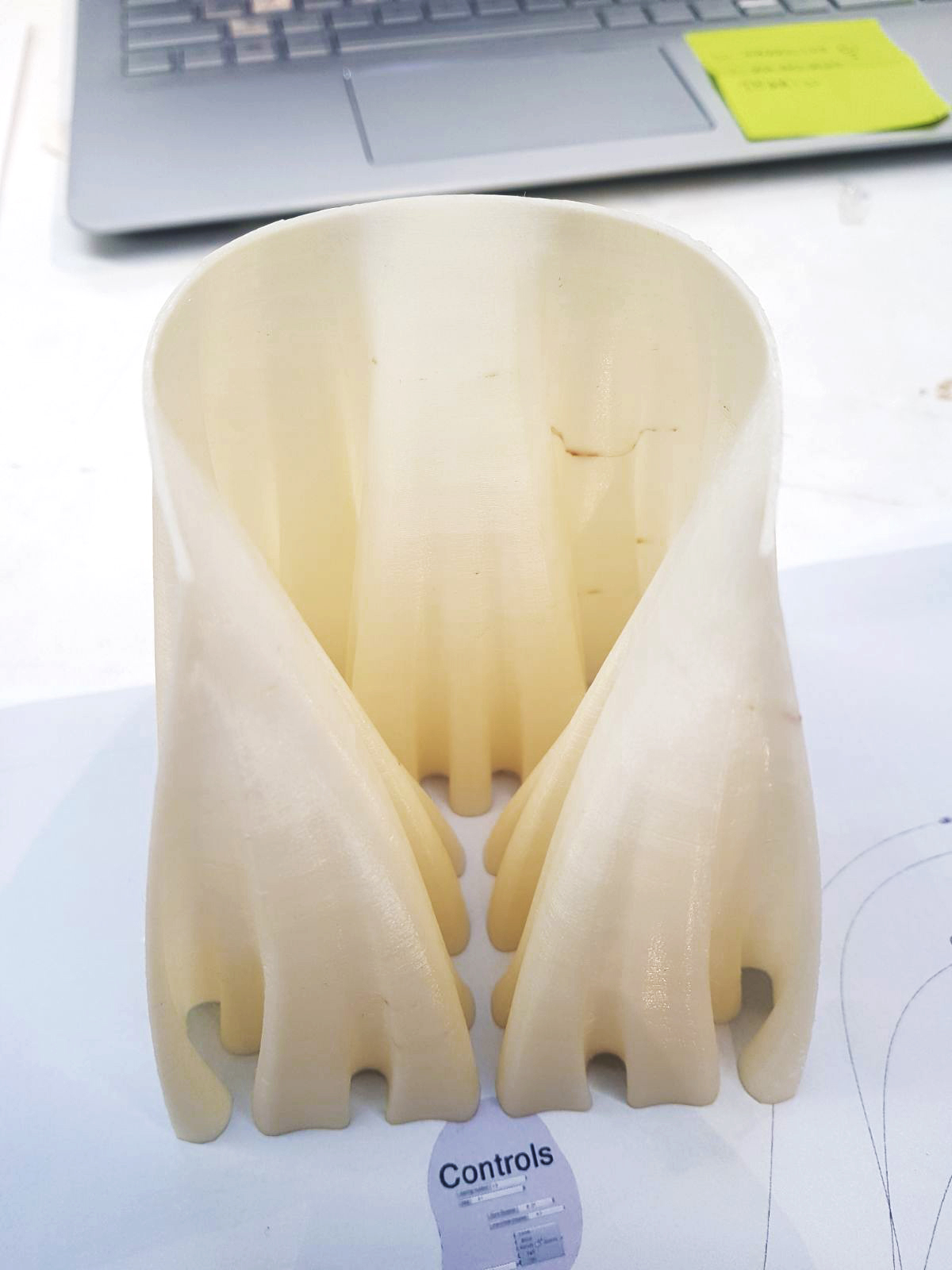
6.3 Developing Whale Curve
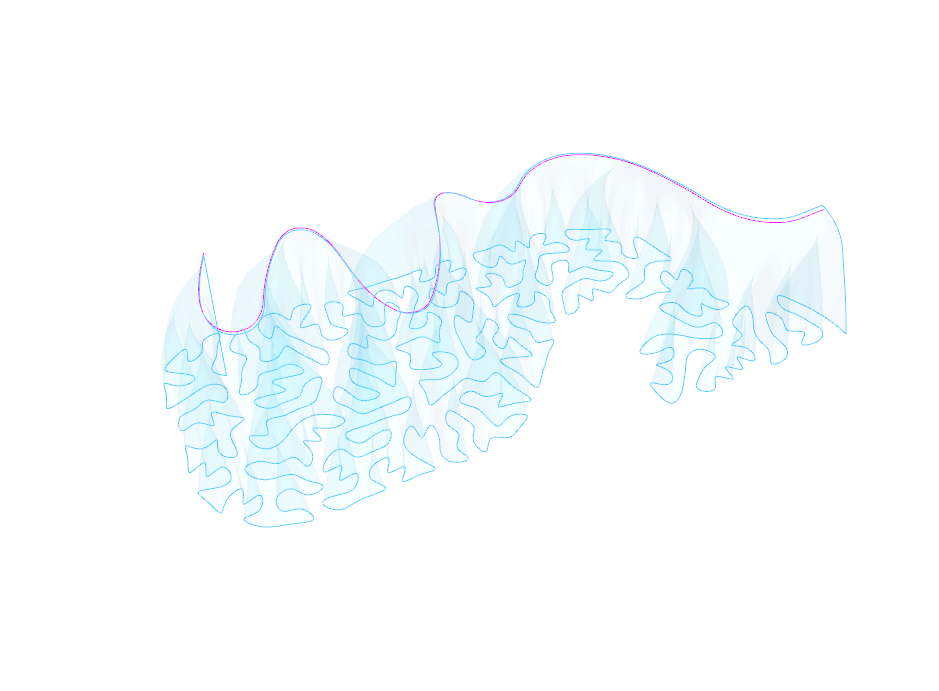
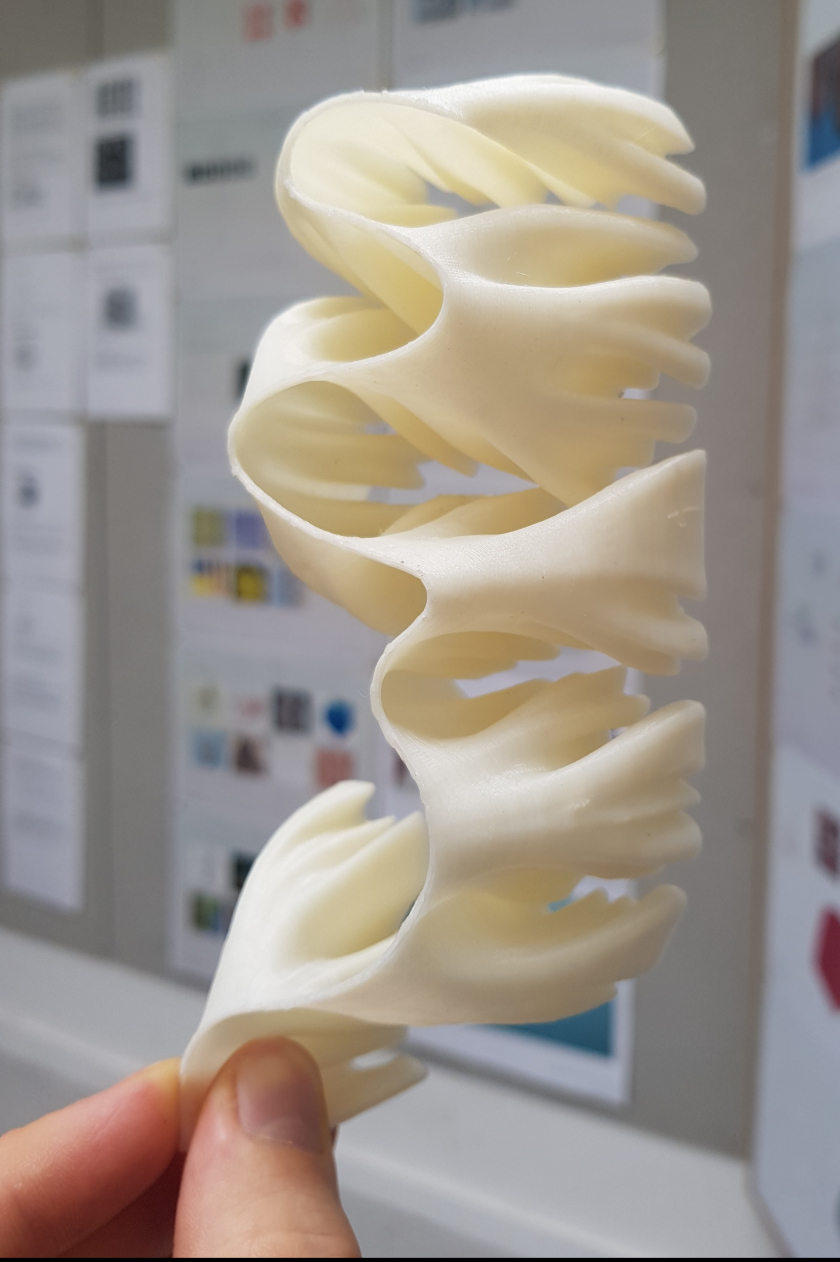
The Wishing Well
something caught in between dimensions – on its way to becoming more.
Summary
The Wishing Well is the physical manifestation, a snap-shot, of a creature caught in between dimensions – frozen in time. It is a digital entity that has been extracted from its home in the fractured planes of the mathematical realm; a differentially grown curve in bloom, organically filling space in the material world.
The notion of geometry in between dimensions is explored in a previous post: Shapes, Fractals, Time & the Dimensions they Belong to
Description
The piece will be built from the bottom-up. Starting with the profile of a differentially grown curve (a squiggly line), an initial layer will be set in pieces of 2 x 4 inch wooden studs (38 x 89 millimeter profile) laid flat, and anchored to the ground. Each subsequent layer will be built upon and fixed to the last, where each new layer is a slightly smoother version than the last. 210 layers will be used to reach a height of 26 feet (8 meters). The horizontal spaces in between each of the pieces will automatically generate hand and foot holes, making the structure easily climbable. The footprint of the build will be bound to a space 32 x 32 feet.
The design may utilize two layers, inner and out, that meet at the top to increase the structural integrity for the whole build. It will be lit from within, either from the ground with spotlights or with LED strip lights following patterns along the walls.

Ambition
At the Wishing Well, visitors embark on a small journey, exploring the uniquely complex geometry of the structure before them. As they approach the foot of the well, it will stand towering above them, undulating organically across the landscape. The nature of the structure’s curves beckons visitors to explore the piece’s every nook and cranny. Moreover, its stature grants a certain degree of shelter to any traveller seeking refuge from the Playa’s extreme weather conditions. The well’s shape and scale allows natural, and artificial, light to interact in curious ways with the structure throughout the day and night. The horizontal gaps between every ‘brick’ in the wall allows light to filter through each layer, which in turn casts intriguing shadows across the desert. This perforation also allows Burners to easily, and relatively safely, scale the face of the build. Visitors will have the opportunity to grant a wish by writing it down on a tag and fixing it to the well’s interior.
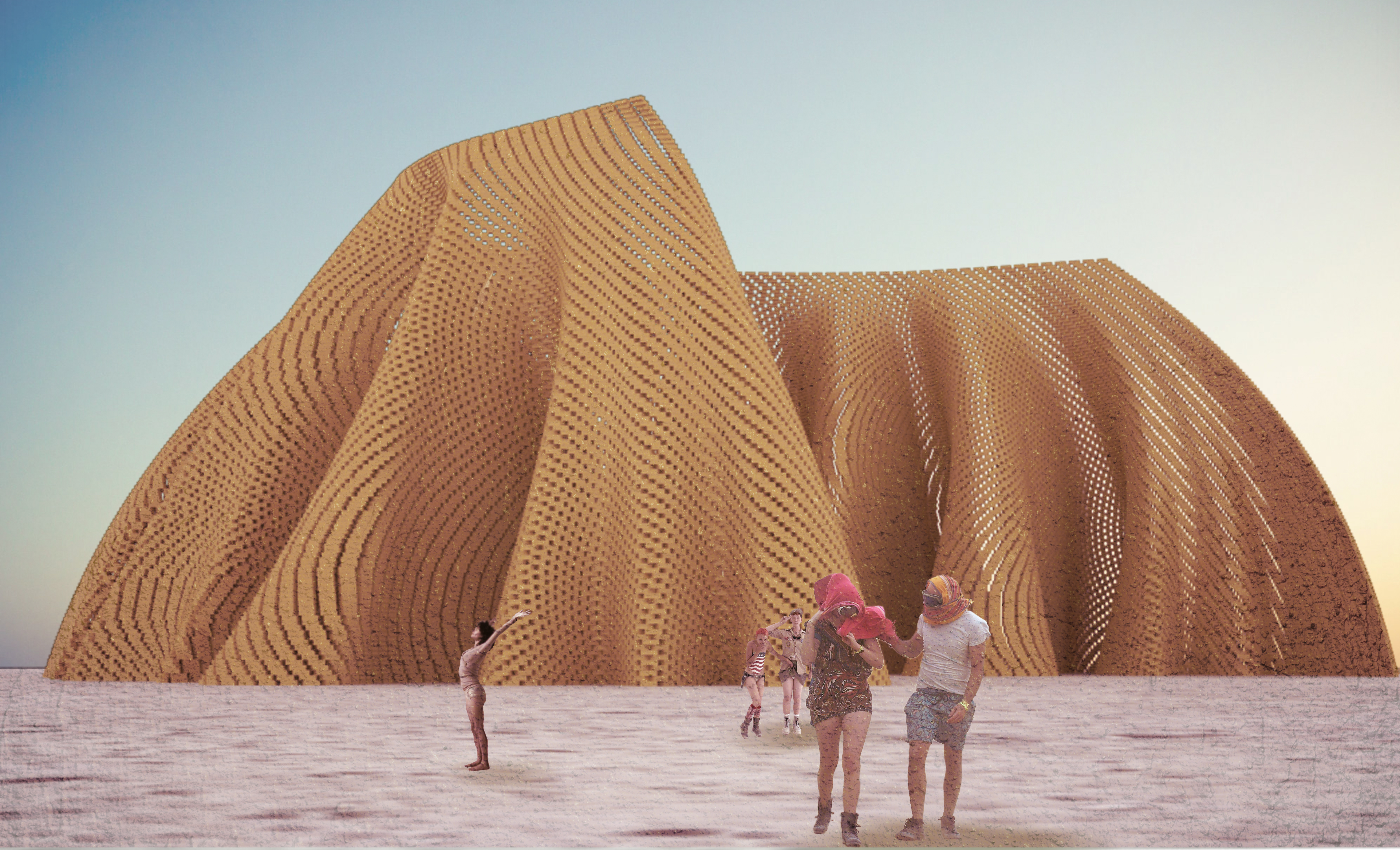
Philosophy
If you had one magical (paradox free) wish, to do anything you like, what would it be?
Anything can be wished for at the Wishing Well, but a wish will not come true if it is deemed too greedy. Visitors must write their wish down on a tag and fix it to the inside of the well. They must choose wisely, as they are only allowed one. Additionally, they may choose to leave a single, precious, offering. However, if the offering does not burn, it will not be accepted. Visitors will also find that they must tread lightly on other people’s wishes and offerings.
The color of the tag and offering are important as they are associated with different meanings:
- ► PINK – love
- ► RED – happiness, joy, success, good luck, passion, vitality, celebration
- ► ORANGE – change, adaptability, spontaneity, concentration
- ► YELLOW – nourishment, warmth, clarity, empathy, being free from worldly cares
- ► GREEN – growth, balance, healing, self-assurance, benevolence, patience
- ► BLUE – conservation, healing, relaxation, exploration, trust, calmness
- ► PURPLE – spiritual awareness, physical and mental healing
- ► BLACK – profoundness, stability, knowledge, trust, adaptability, spontaneity,
- ► WHITE – mourning, righteousness, purity, confidence, intuition, spirits, courage
The Wishing Well is a physical manifestation of the wishes it holds. They are something caught in between – on their way to becoming more. I wish for guests to reflect on where they’ve been, where they are, where they are going, and where they wish to go.
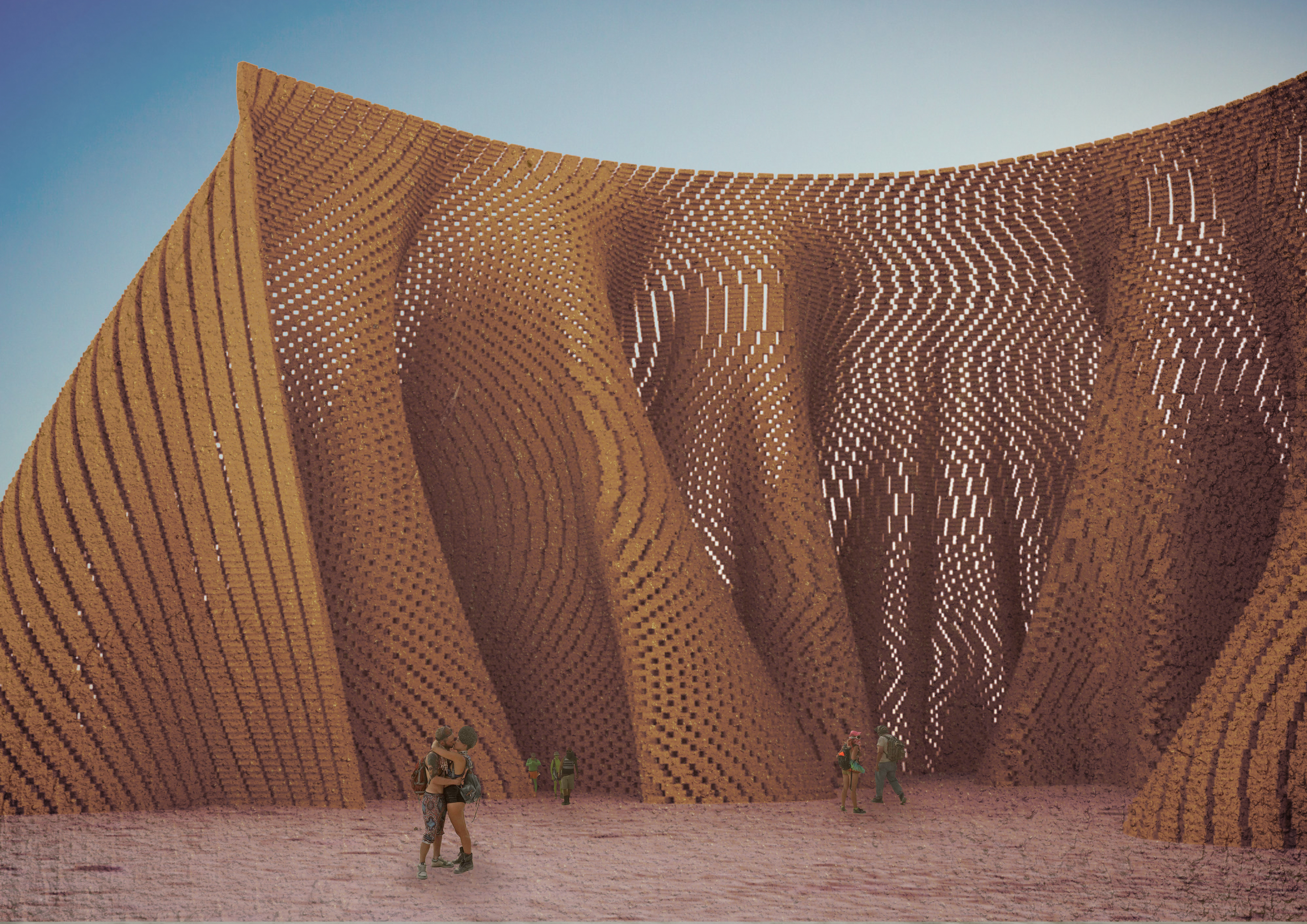
Shapes, Fractals, Time &, the Dimensions they Belong to
First, second and third dimensions, and why fractals don’t belong to any of them, as well as what happens when you get into higher dimensions.
Foreword
1.0 Traditional Dimensions
In physics and mathematics, dimensions are used to define the Cartesian plains. The measure of a mathematical space is based on the number of variables require to define it. The dimension of an object is defined by how many coordinates are required to specify a point on it.

1.1 – Zero Dimensions
Something of zero dimensions give us a point. While a point can inhabit (and be defined in) higher dimensions, the point itself has a dimension of zero; you cannot move anywhere on a point.
1.2 – One Dimension
1.3 – Two Dimensions

Surfaces or plains gives us two-dimensional shapes, and are typically bound by one-dimensional shapes (lines/curves).
A plain can be defined by x&y, y&z or x&z; more complex surfaces are commonly defined by u&v values. These variable are arbitrary, what is important is that there are two of them.
1.4 – Three Dimensions

A volume gives us a three-dimensional shape, and can be bound by two-dimensional shapes (surfaces).
2.0 Fractal Dimensions
Fractals can be generally classified as shapes with a non-integer dimension (a dimension that is not a whole number). They may or may not be self-similar, but are typically measured by their properties at different scales.
Felix Hausdorff and Abram Besicovitch demonstrated that, though a line has a dimension of one and a square a dimension of two, many curves fit in-between dimensions due to the varying amounts of information they contain. These dimensions between whole numbers are known as Hausdorff-Besicovitch dimensions.
2.1 – Between the First & Second Dimensions
Surfaces give us two-dimensional shapes, where two coordinate are required to define a point on them.

If you were to walk along the shape starting from the base, you could go forwards and backwards, but suddenly you have an option that’s more than forwards and backwards, but less than left and right.
You cannot define a point on this shape with a single coordinate, and a two coordinate system would define a point off of the shape more often than not.

2.2 – Between the Second & Third Dimensions

Surfaces give us two-dimensional shapes, where two coordinate are required to define a point on them.
A volume gives us a three-dimensional shape where a point could be defined by no less than three coordinates.
While these models live in three dimensions, they do not quite have access to all of them. You cannot define a point on them with two coordinates: they are more than a surface and less than a volume.
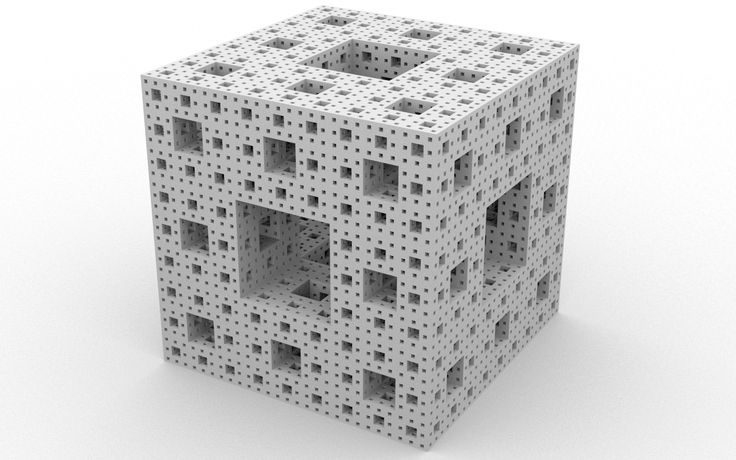
2.3 – Calculating Fractal Dimensions
On another note:
3.0 Higher Dimensions
That being said, it’s plausible that we experience much higher dimensions that are just too hard to perceive. For example, an ant walking along the surface of a sphere will only ever perceive two dimensions, but is moving through three dimensions, and is subject to the fourth (temporal) dimension.
3.1 – The Fourth Dimension (Temporal)

3.2 – The Fourth Dimension (Spacial)
If we explore spacial dimensions, a four-dimensional object may be achieved by ‘folding’ three-dimensional objects together. They cannot exist in our three-dimensional world, but there are tricks to visualise them.

We know that we can construct a cube by folding a series of two-dimensional surfaces together, but this is only possible with the third dimension, which we have access to.

If we visualise, in two dimensions, a cube rotating (as seen above), it looks like each surface is distorting, growing and shrinking, and is passing through the other. However we are familiar enough with the cube as a shape to know that this is simply a trick of perspective – that objects only look smaller when they are farther away.
In the same way that a cube is made of six squares, a four-dimensional cube (hypercube or tesseract), is made of eight cubes.
- A line is bound by two zero-dimensional things
- A square is bound by four one-dimensional shapes
- A cube is bound by six two-dimensional surfaces
- A hypercube, bound by eight three-dimensional volumes
It looks like each cube is distorting, growing and shrinking, and passing through the other. This is because we can only represent eight cubes folding together in the fourth dimension with three-dimensional perspective animation.
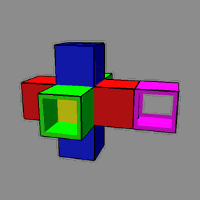
Perspective makes it look like the cubes are growing and shrinking, when they are simply getting closer and further in four-dimensional space. If somehow we could access this higher dimension, we would see these cubes fold together unharmed the same way forming a cube leaves each square unharmed.
Below is a three-dimensional perspective view of hypercube rotating in four dimensions, where (in four-dimensional space) all eight cubes are always the same, but are being subjected to perspective.

3.3 – The Fifth and Sixth Dimensions
(For example: x, y, z, t1, t2, t3)
This is a space where one can move through time based on probability and permutations of what could have been, is, was, or will be on alternate timelines. For any one point in this space, there are six coordinates that describe its position.


There’s a terrific explanation of what happens to platonic solids and regular polytopes in higher dimensions on Numberphile: https://youtu.be/2s4TqVAbfz4
3.4 – Even Higher Dimensions
Dimensions seven though ten are different universes with different possibilities, and impossibilities, and even different laws of physics. These grasp all the possibilities and permutations of how each universe operates, and the whole of reality with all the permutations they’re in, throughout all of time and space. The highest dimension is the encompassment of all of those universes, possibilities, choices, times, places all into a single ‘thing.’
These ten time-space dimensions belong to something called Super-string Theory, which is what physicists are using to help us understand how the universe works.

While we don’t have experimental or observational evidence to confirm whether or not any of these additional dimensions really exist, theoretical physicists continue to use these studies to help us learn more about how the universe works. Like how gravity affects time, or the higher dimensions affect quantum theory.
The Curves of Life
“An organism is so complex a thing, and growth so complex a phenomenon, that for growth to be so uniform and constant in all the parts as to keep the whole shape unchanged would indeed be an unlikely and an unusual circumstance. Rates vary, proportions change, and the whole configuration alters accordingly.” – D’Arcy Wentworth Thompson
“This is the classic reference on how the golden ratio applies to spirals and helices in nature.” – Martin Gardner

What makes this book particularly enjoyable to flip through is an abundance of beautiful hand drawings and diagrams. Sir Theodore Andrea Cook explores, in great detail, the nature of spirals in the structure of plants, animals, physiology, the periodic table, galaxies etc. – from tusks, to rare seashells, to exquisite architecture.
He writes, “a staircase whose form and construction so vividly recalled a natural growth would, it appeared to me, be more probably the work of a man to whom biology and architecture were equally familiar than that of a builder of less wide attainments. It would, in fact, be likely that the design had come from some great artist and architect who had studied Nature for the sake of his art, and had deeply investigated the secrets of the one in order to employ them as the principles of the other.”
Cook especially believes in a hands-on approach, as oppose to mathematic nation or scientific nomenclature – seeing and drawing curves is far more revealing than formulas.

 “because I believe very strongly that if a man can make a thing and see what he has made, he will understand it much better than if he read a score of books about it or studied a hundred diagrams and formulae. And I have pursued this method here, in defiance of all modern mathematical technicalities, because my main object is not mathematics, but the growth of natural objects and the beauty (either in Nature or in art) which is inherent in vitality.”
“because I believe very strongly that if a man can make a thing and see what he has made, he will understand it much better than if he read a score of books about it or studied a hundred diagrams and formulae. And I have pursued this method here, in defiance of all modern mathematical technicalities, because my main object is not mathematics, but the growth of natural objects and the beauty (either in Nature or in art) which is inherent in vitality.”
Despite this, it is clear that Theodore Cook has a deep love of mathematics. He describes it at the beautifully precise instrument that allows humans to satisfy their need to catalog, label and define the innumerable facts of life. This ultimately leads him into profoundly fascinating investigations into the geometry of the natural world.
Relevant Material

“An organism is so complex a thing, and growth so complex a phenomenon, that for growth to be so uniform and constant in all the parts as to keep the whole shape unchanged would indeed be an unlikely and an unusual circumstance. Rates vary, proportions change, and the whole configuration alters accordingly.” – D’Arcy Wentworth Thompson
D’Arcy Wentworth Thompson wrote, on an extensive level, why living things and physical phenomena take the form that they do. By analysing mathematical and physical aspects of biological processes, he expresses correlations between biological forms and mechanical phenomena.
He puts emphasis on the roles of physical laws and mechanics as the fundamental determinants of form and structure of living organisms. D’Arcy describes how certain patterns of growth conform to the golden ratio, the Fibonacci sequence, as well as mathematics principles described by Vitruvius, Da Vinci, Dürer, Plato, Pythagoras, Archimedes, and more.
While his work does not reject natural selection, it holds ‘survival of the fittest’ as secondary to the origin of biological form. The shape of any structure is, to a large degree, imposed by what materials are used, and how. A simple analogy would be looking at it in terms of architects and engineers. They cannot create any shape building they want, they are confined by physical limits of the properties of the materials they use. The same is true to any living organism; the limits of what is possible are set by the laws of physics, and there can be no exception.
Further Reading:

“You could look at nature as being like a catalogue of products, and all of those have benefited from a 3.8 billion year research and development period. And given that level of investment, it makes sense to use it.” – Michael Pawlyn
Michael Pawlyn, one of the leading advocates of biomimicry, describes nature as being a kind of source-book that will help facilitate our transition from the industrial age to the ecological age of mankind. He distinguishes three major aspects of the built environment that benefit from studying biological organisms:
The first being the quantity on resources that use, the second being the type of energy we consume and the third being how effectively we are using the energy that we are consuming.
Exemplary use of materials could often be seen in plants, as they use a minimal amount of material to create relatively large structures with high surface to material ratios. As observed by Julian Vincent, a professor in Biomimetics, “materials are expensive and shape is cheap” as opposed to technology where the inverse is often true.
Plants, and other organisms, are well know to use double curves, ribs, folding, vaulting, inflation, as well as a plethora of other techniques to create forms that demonstrate incredible efficiency.

